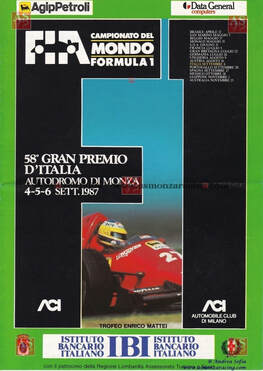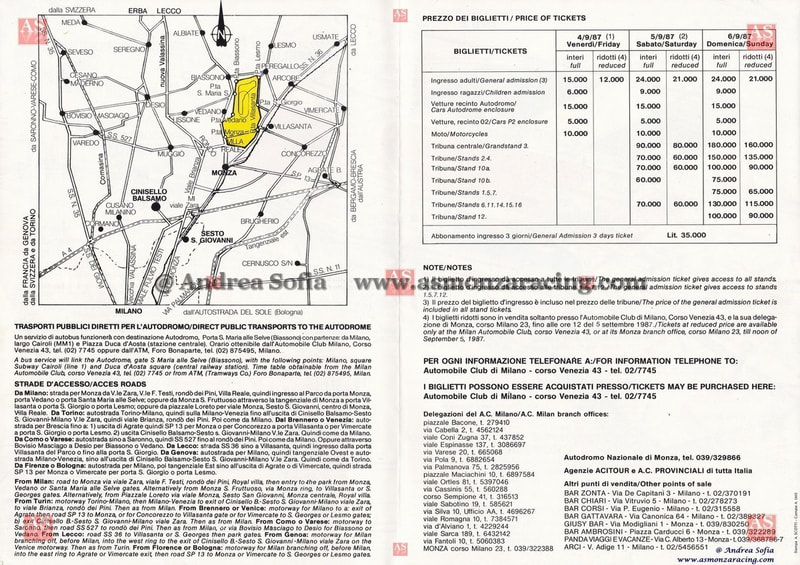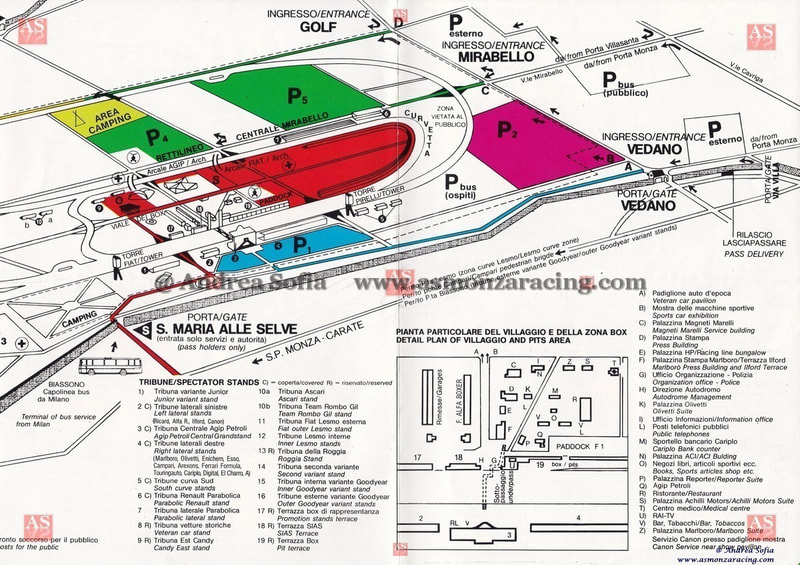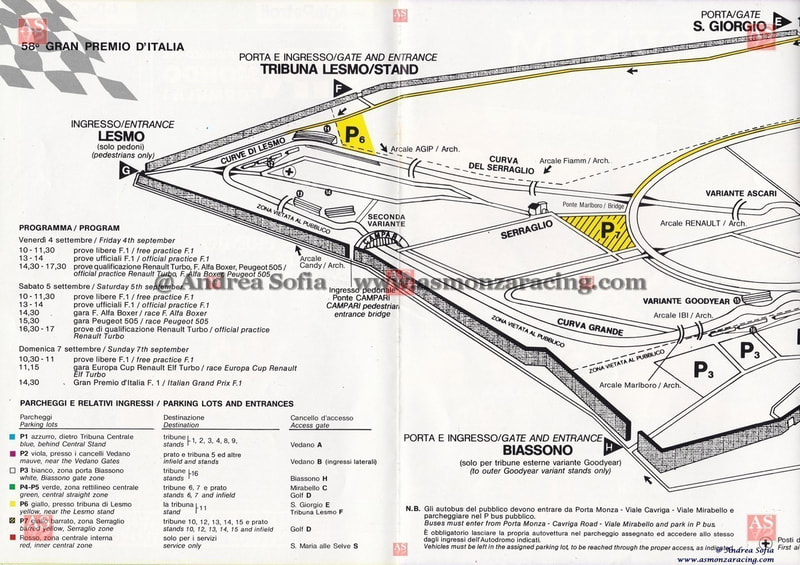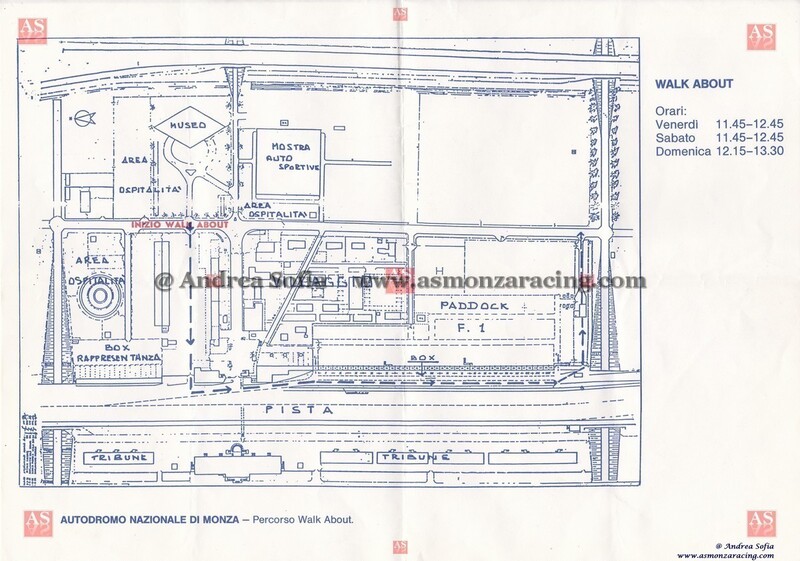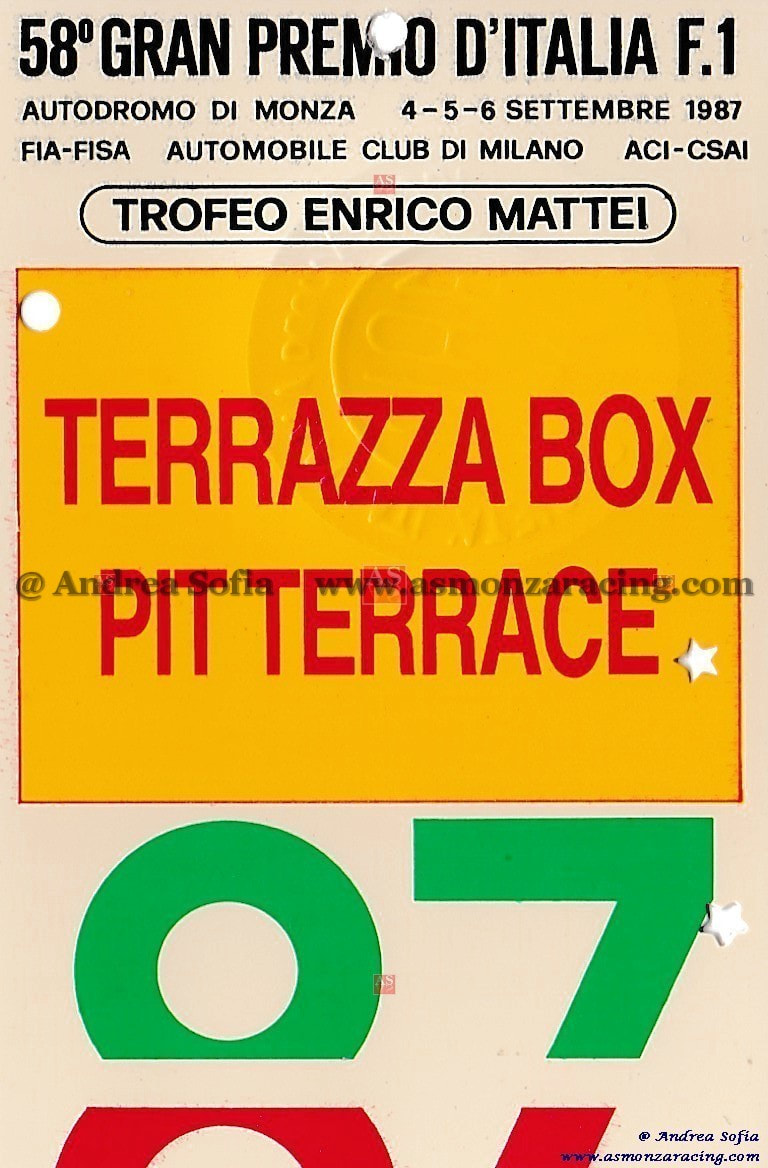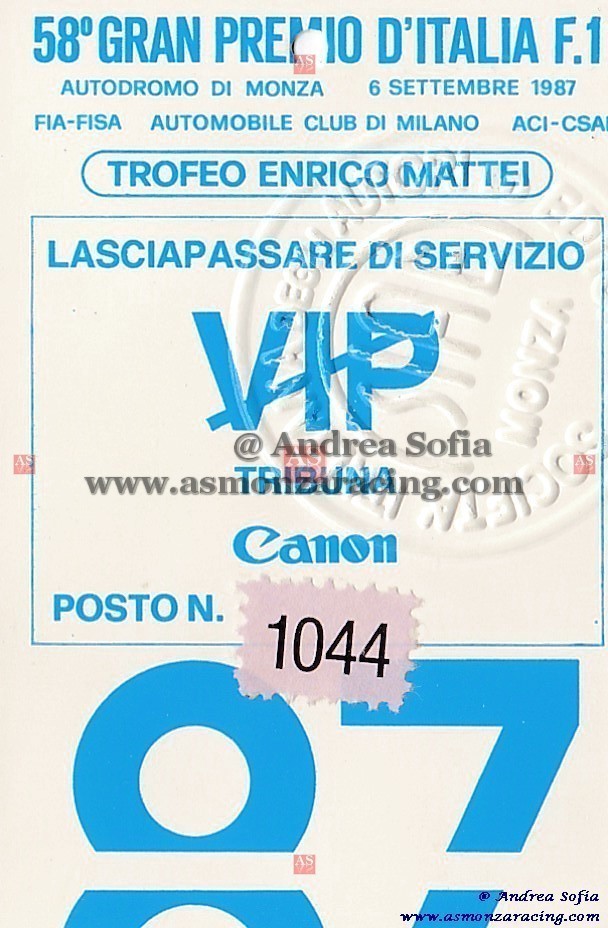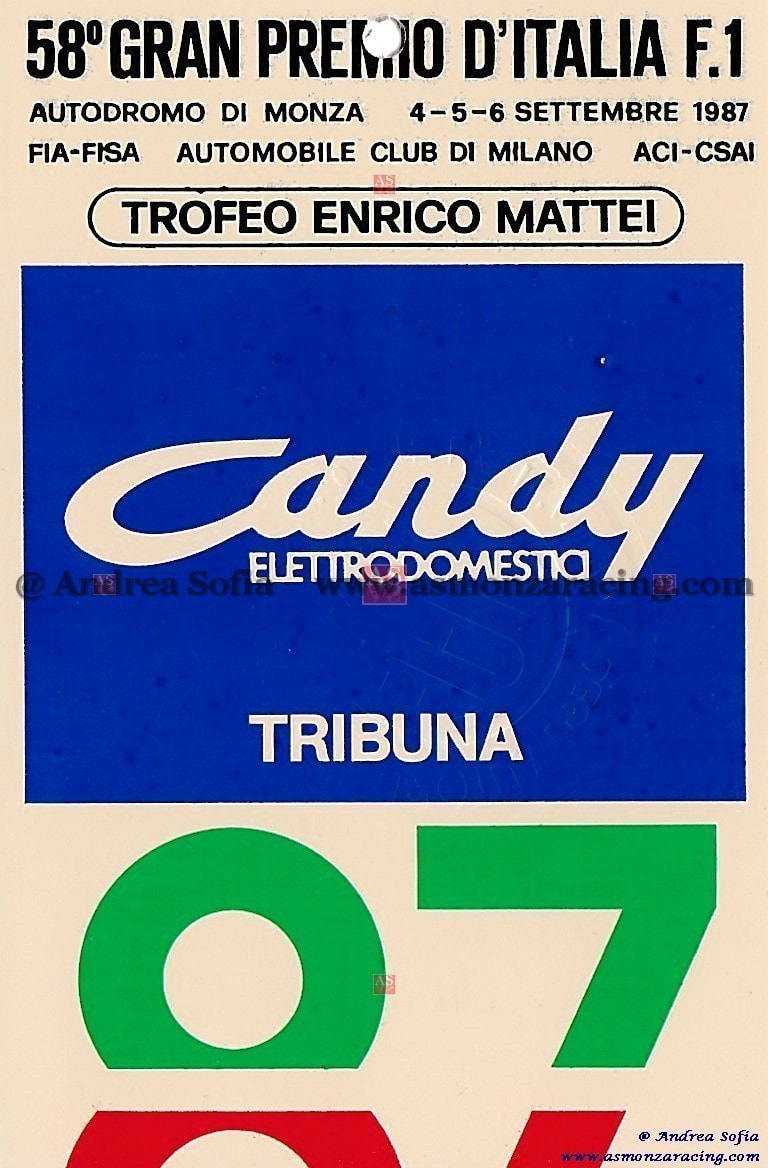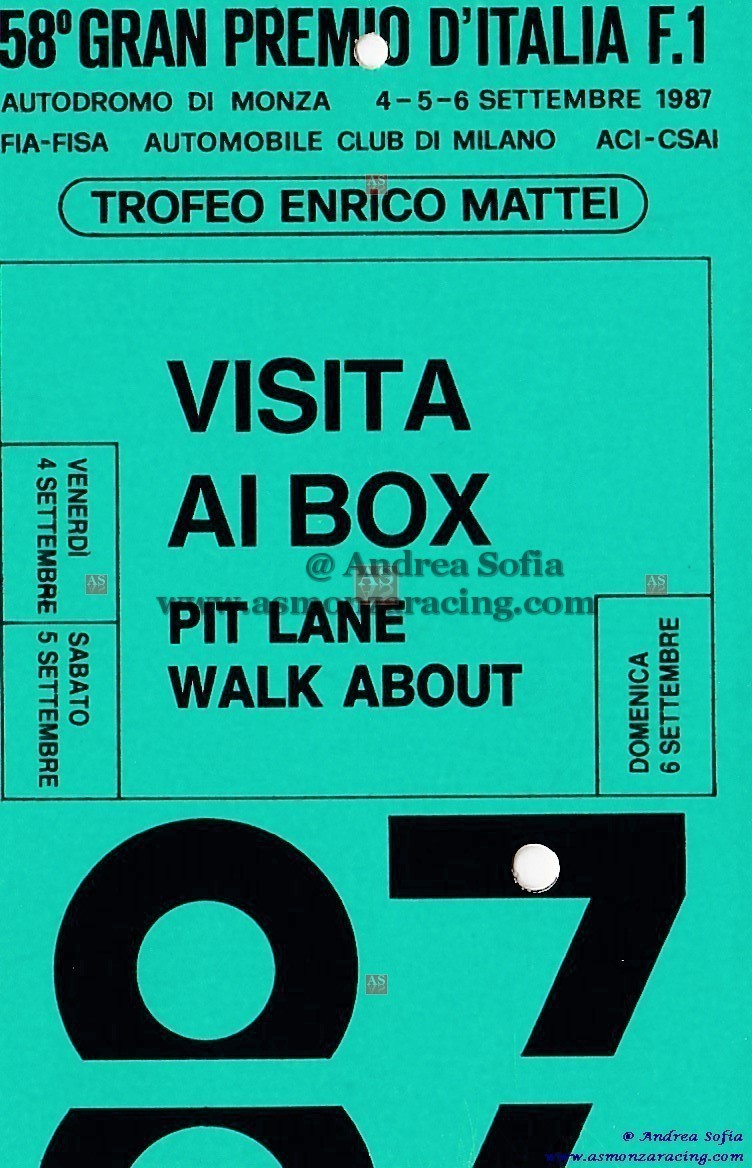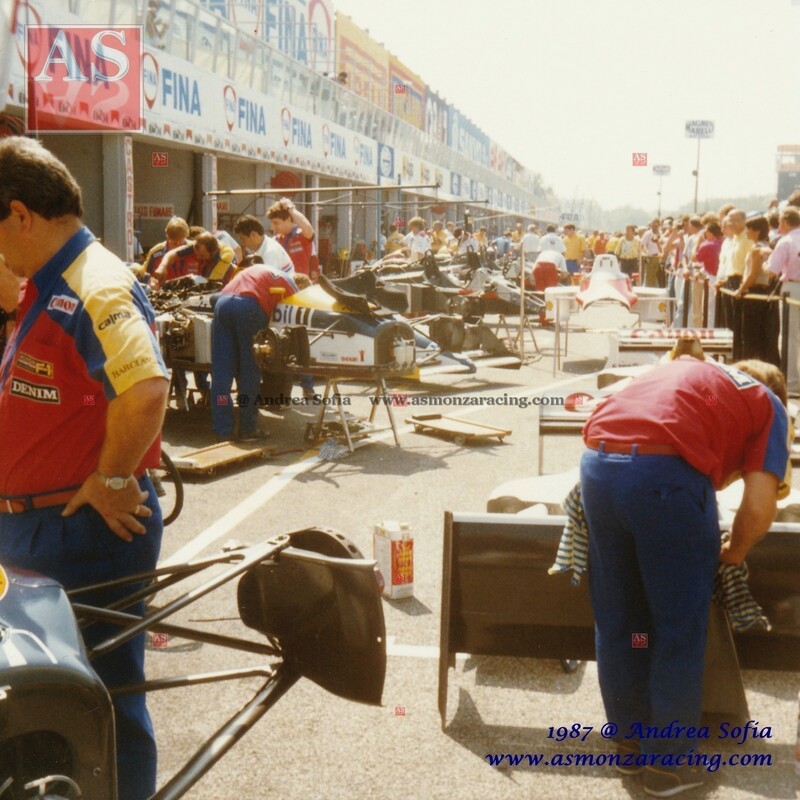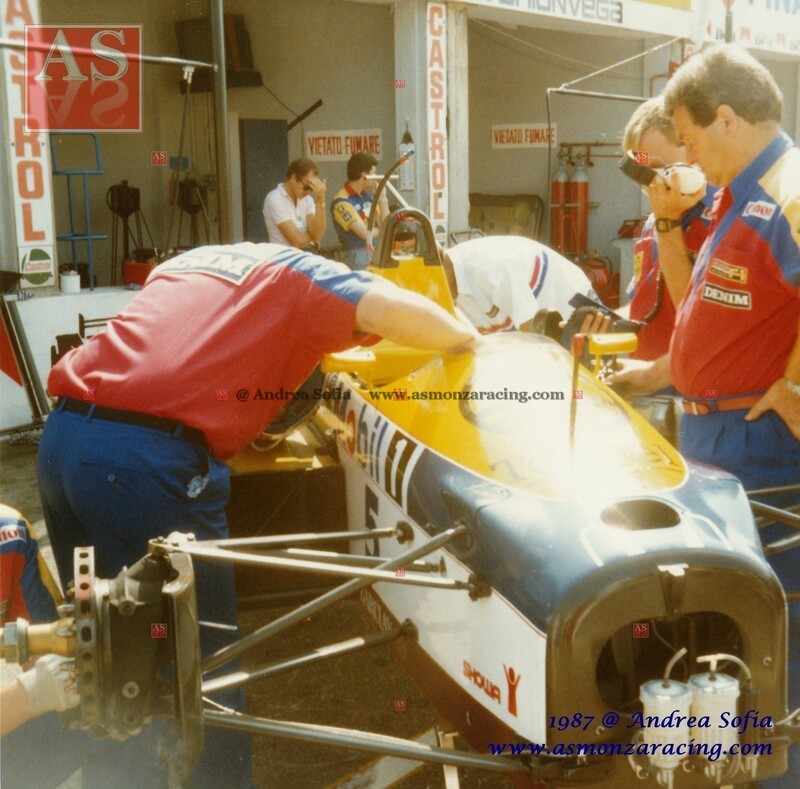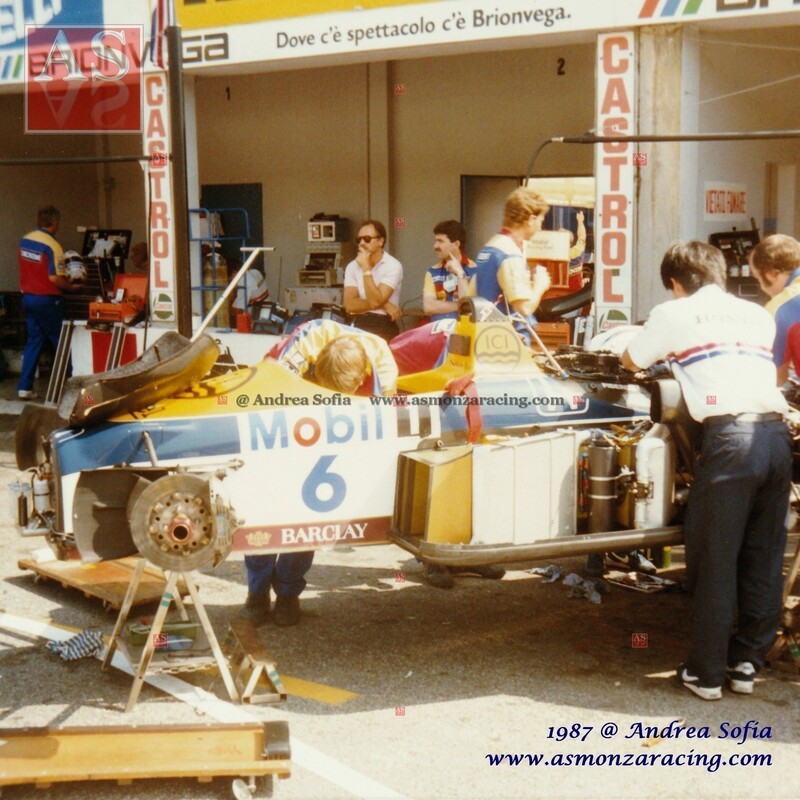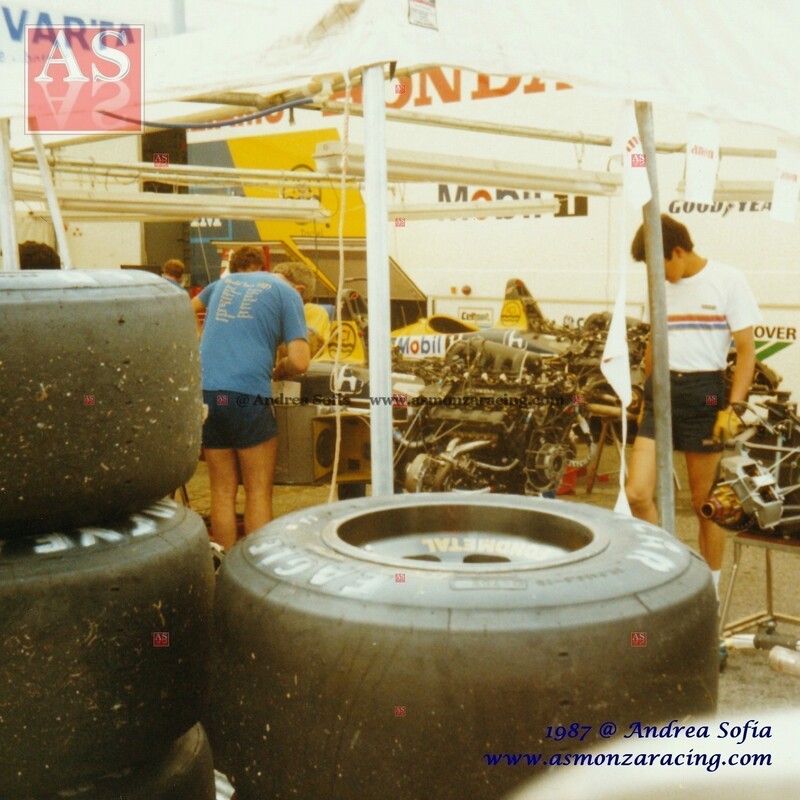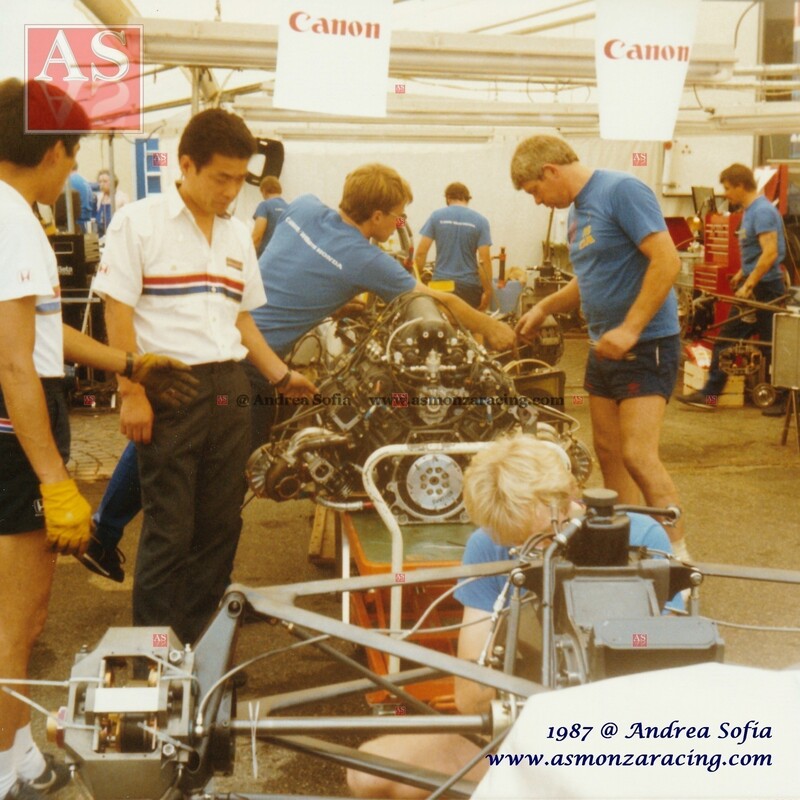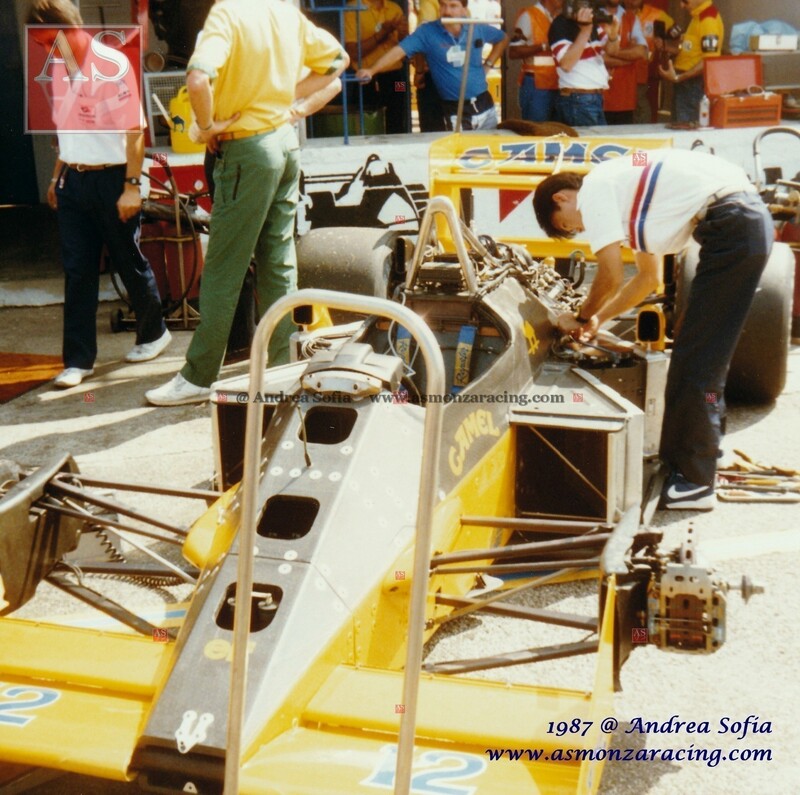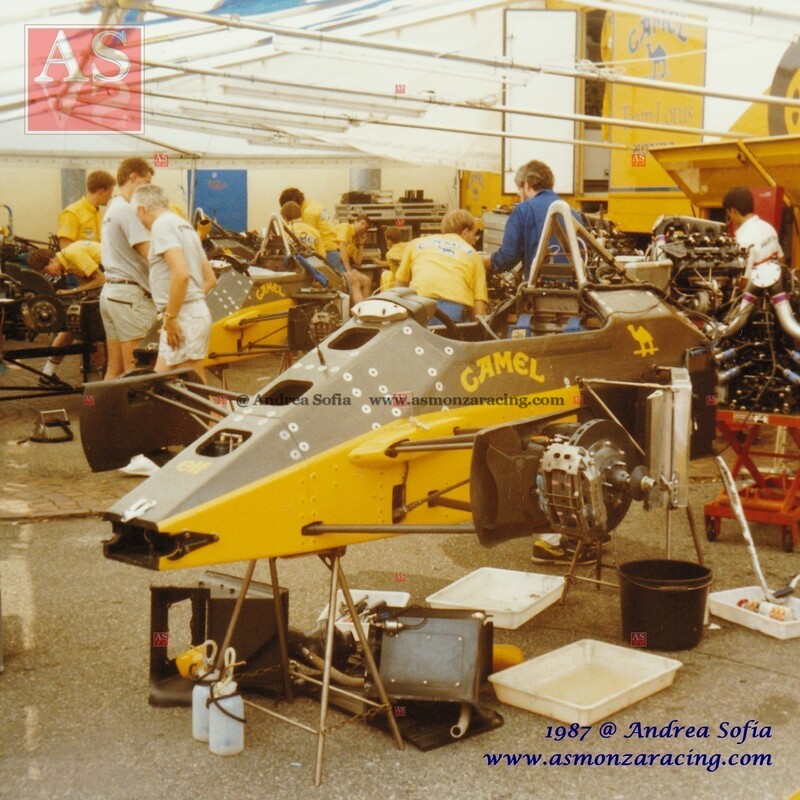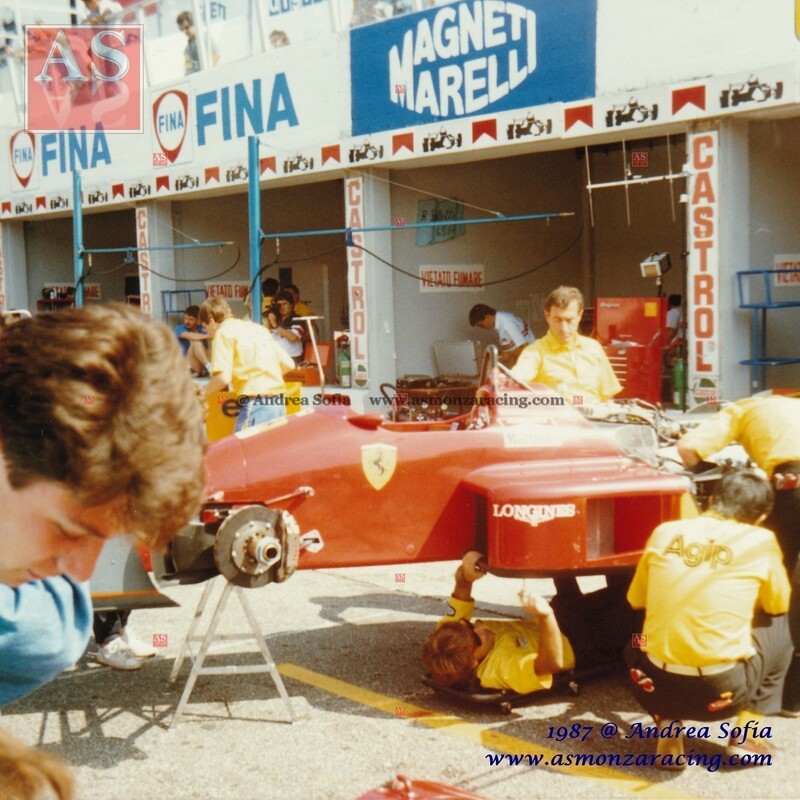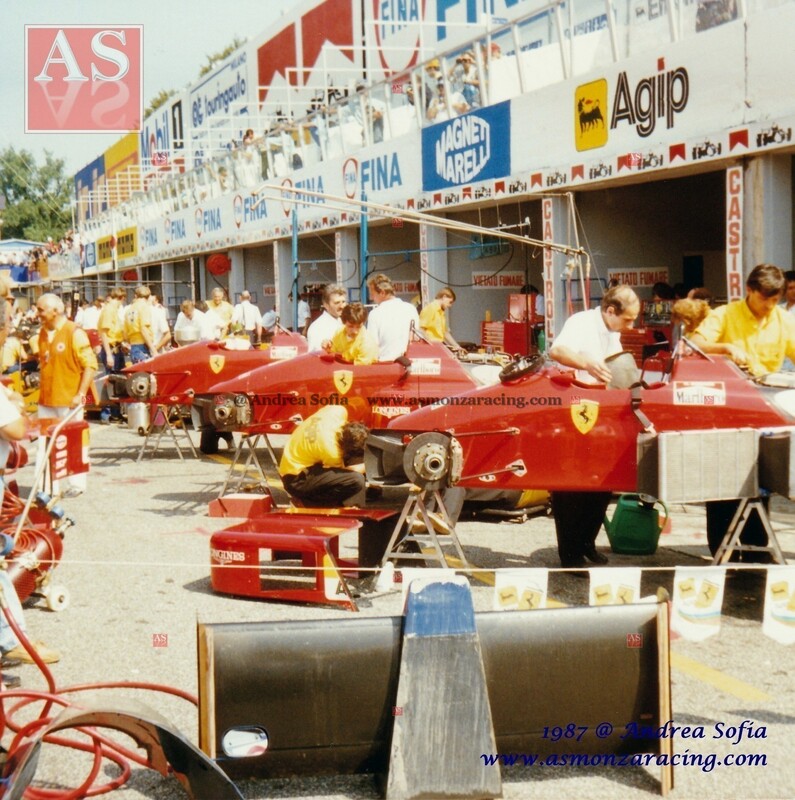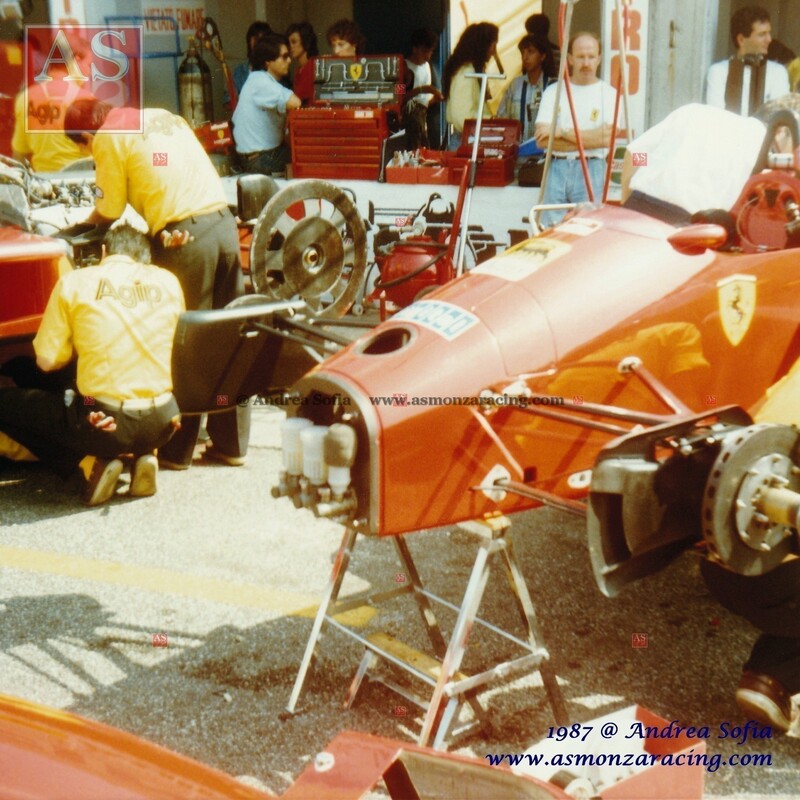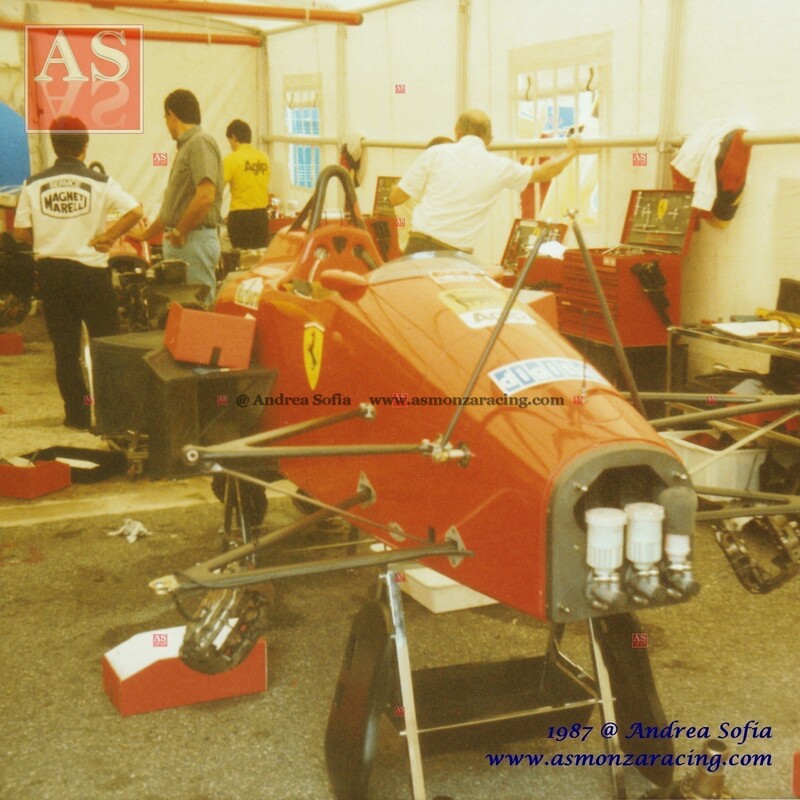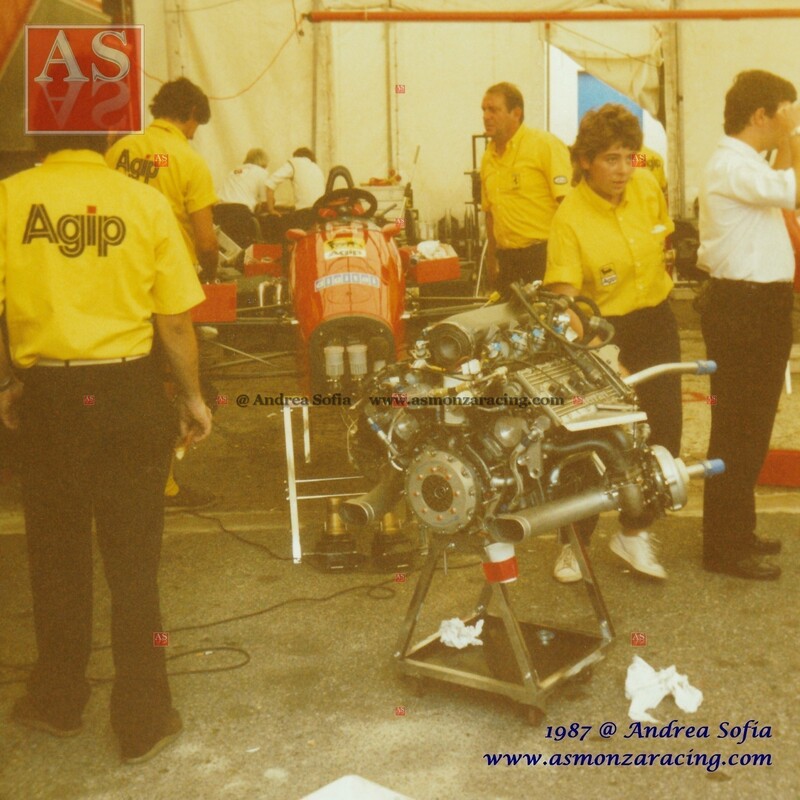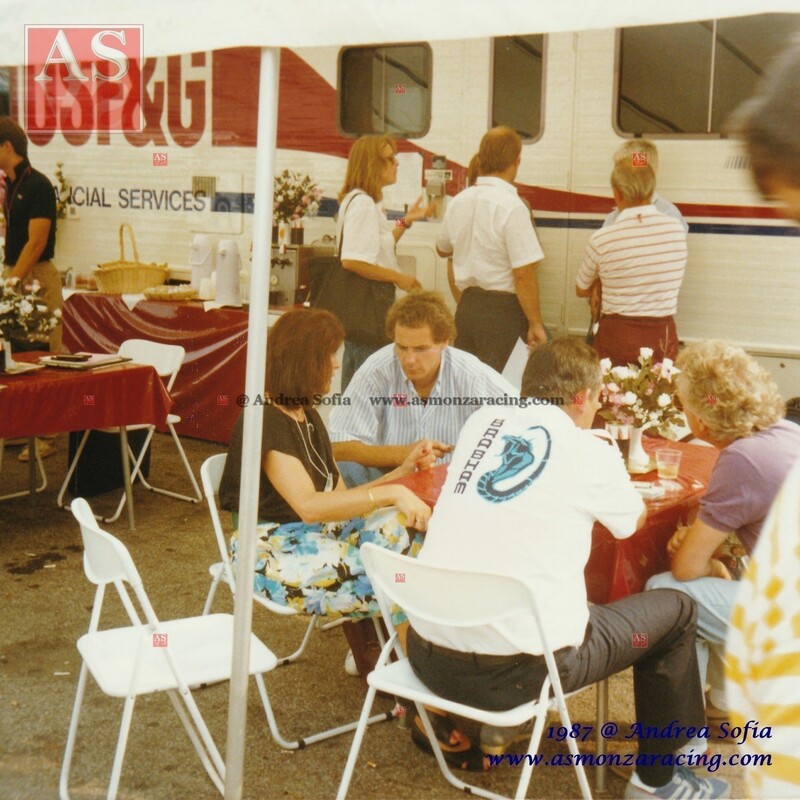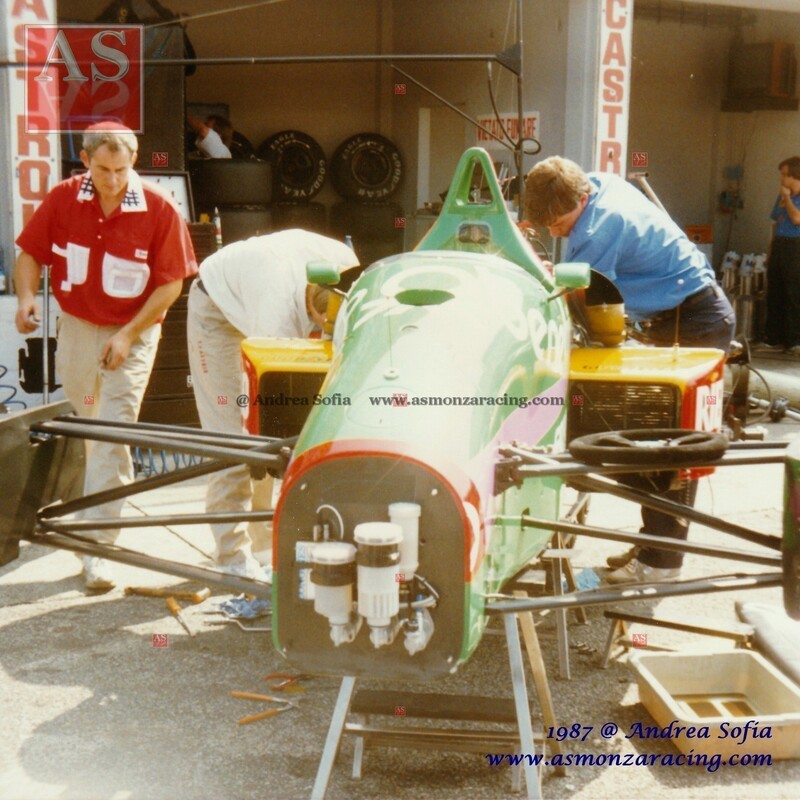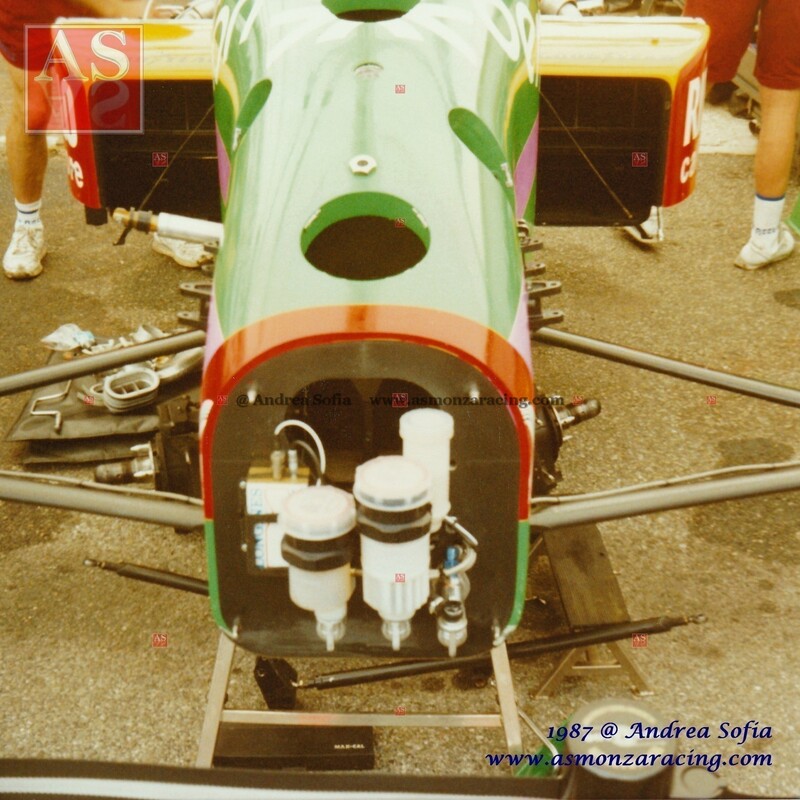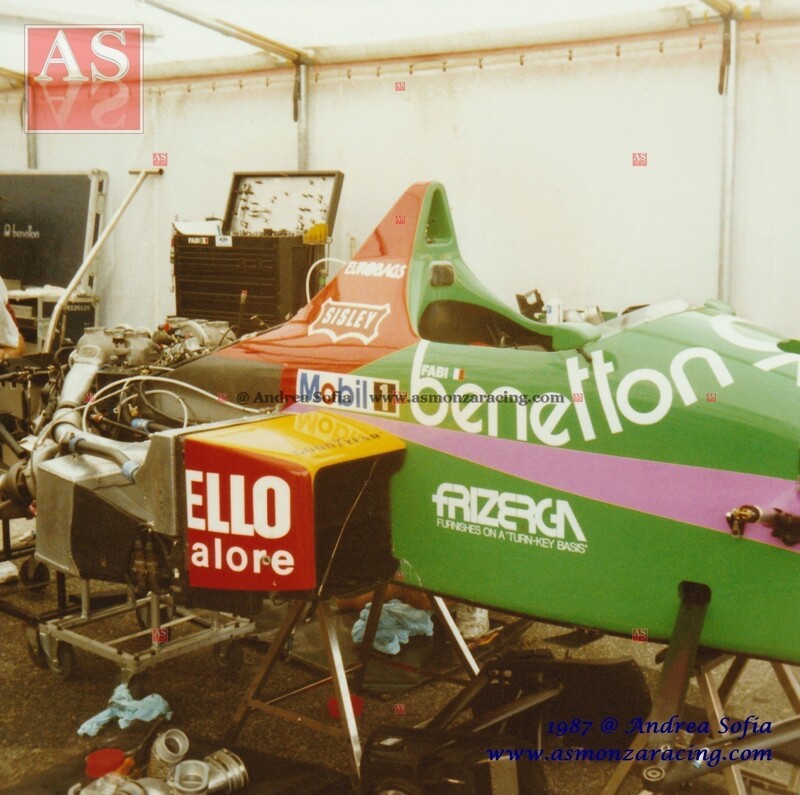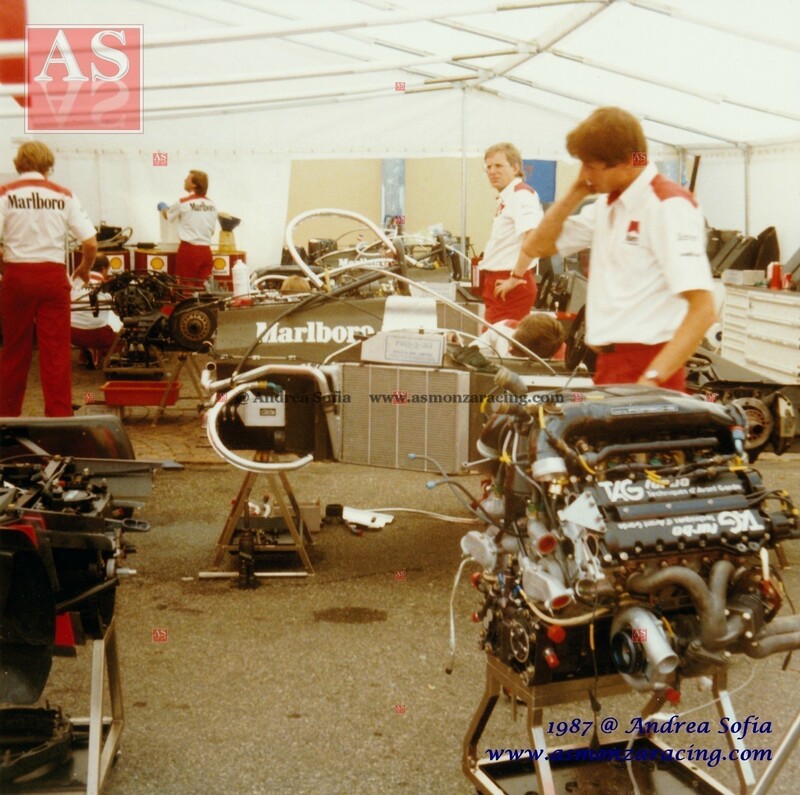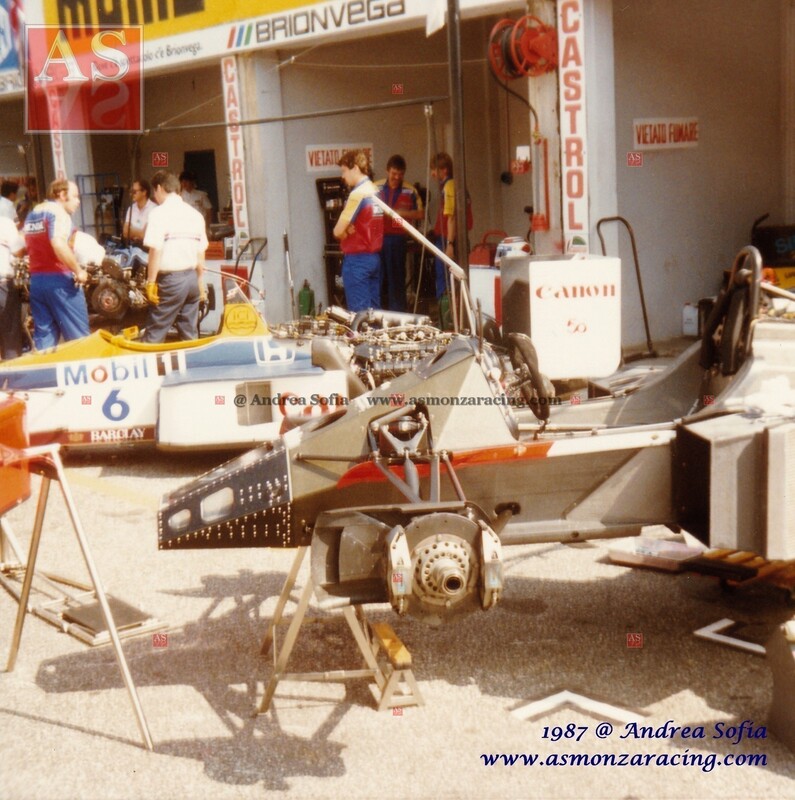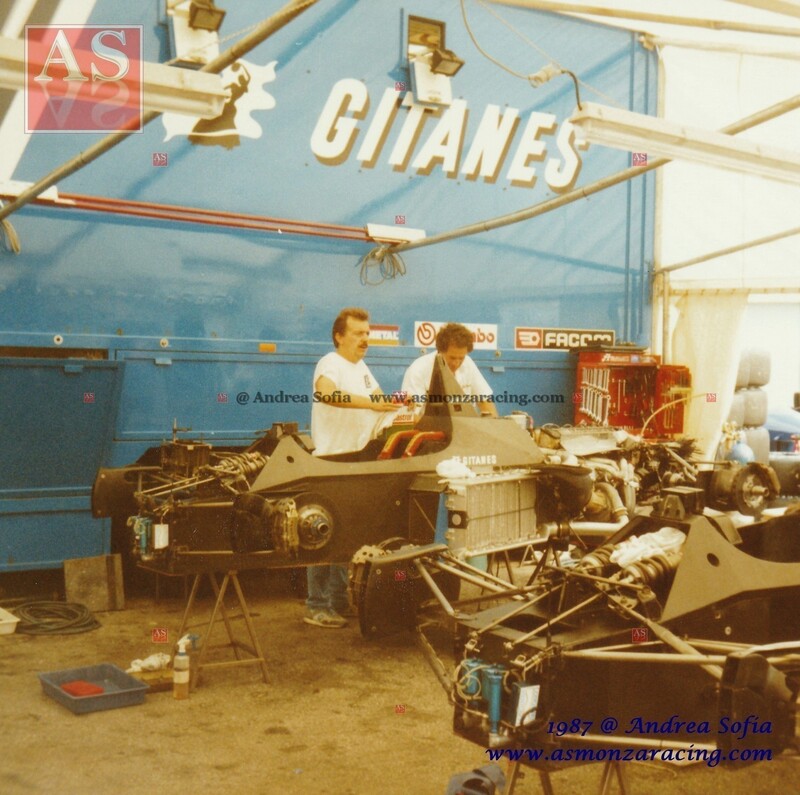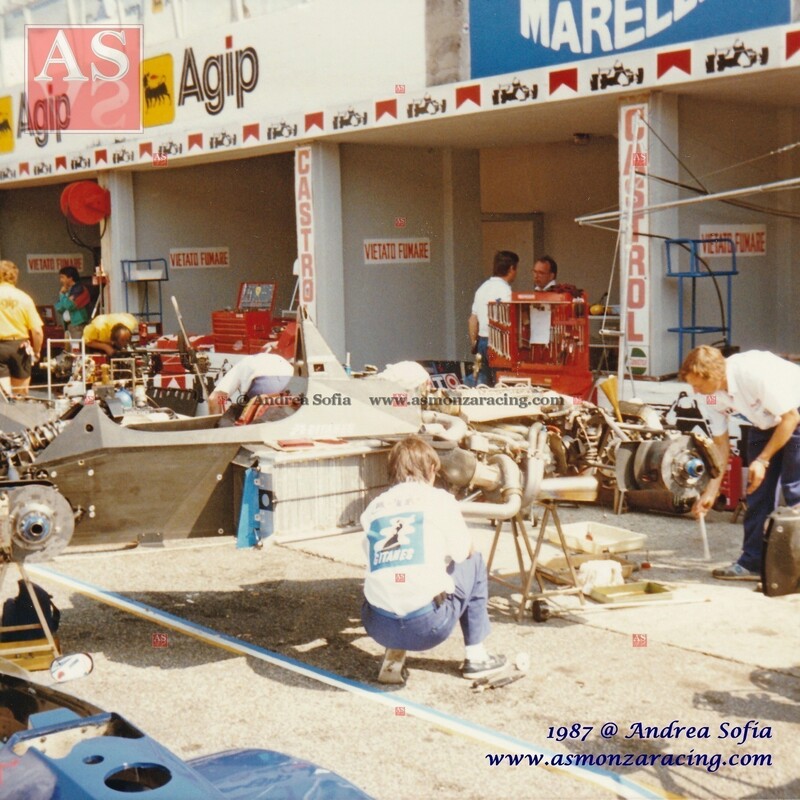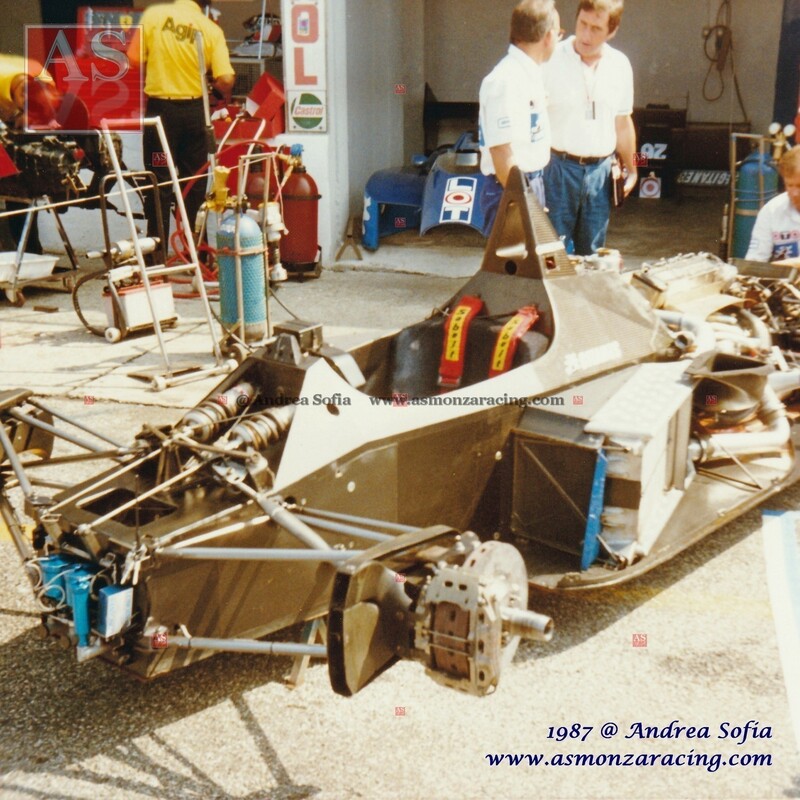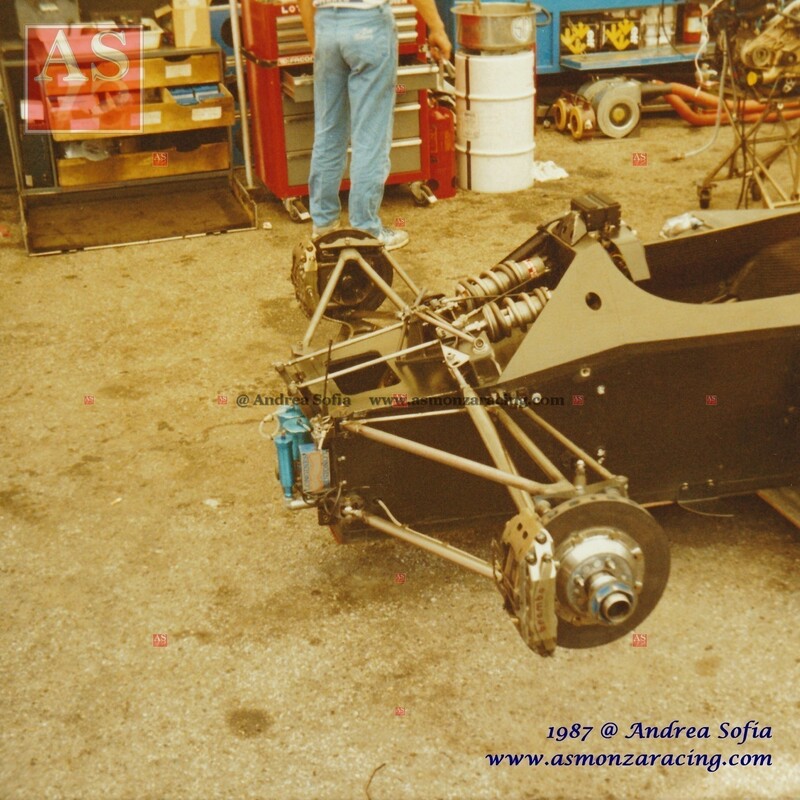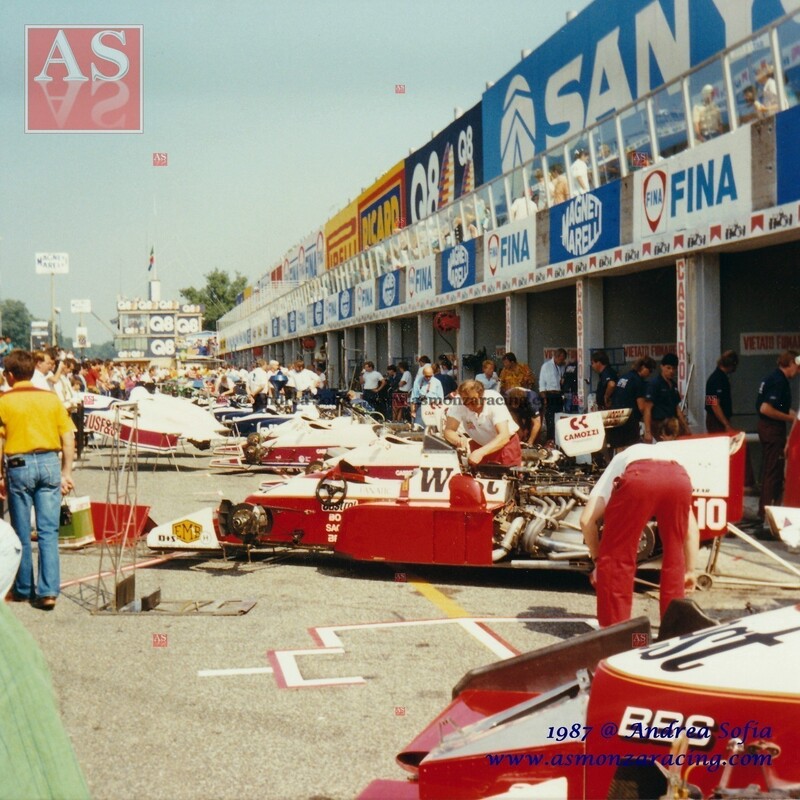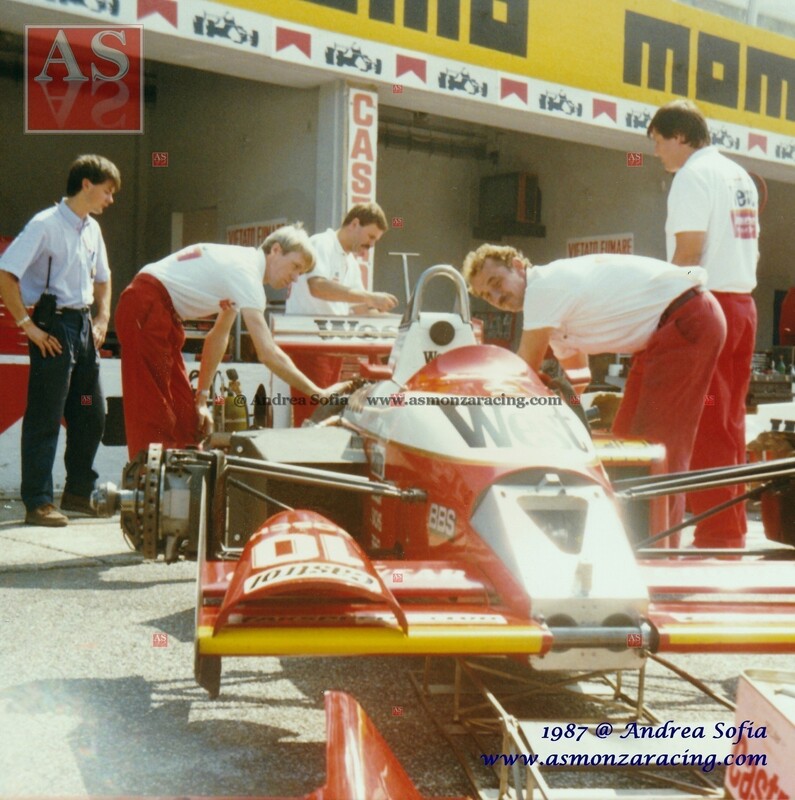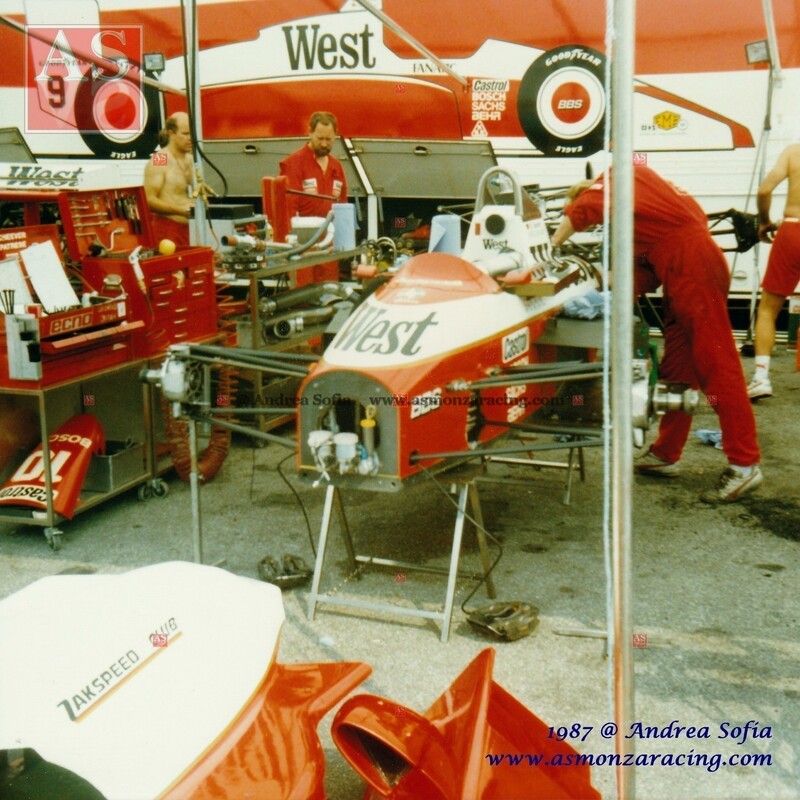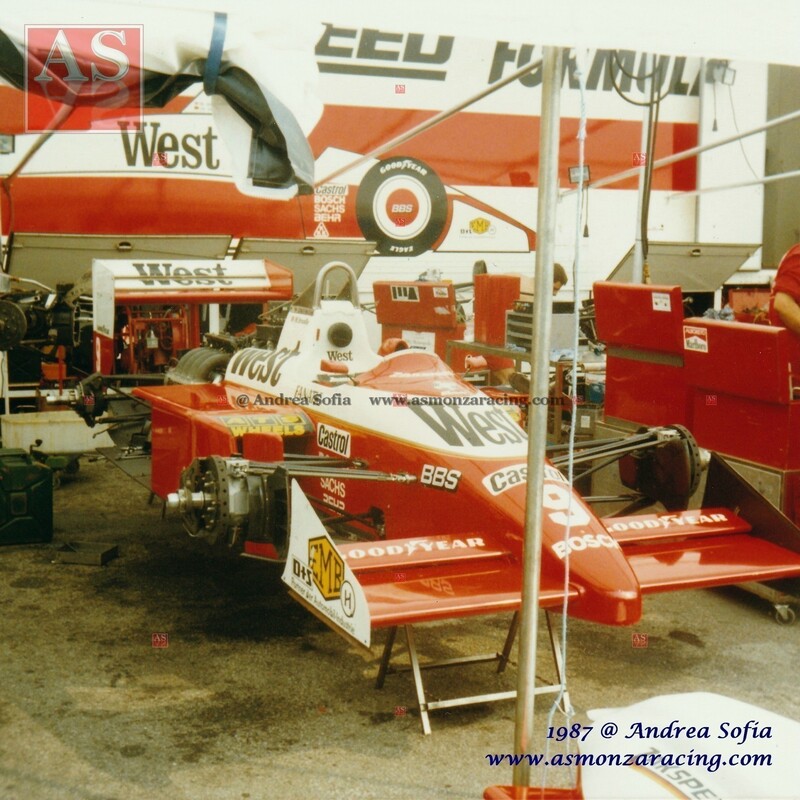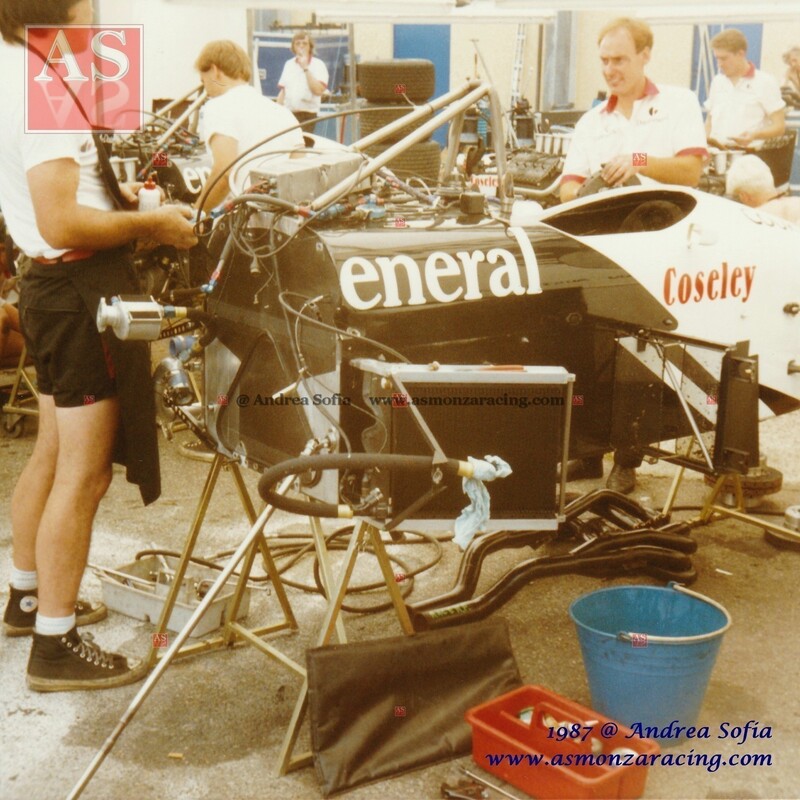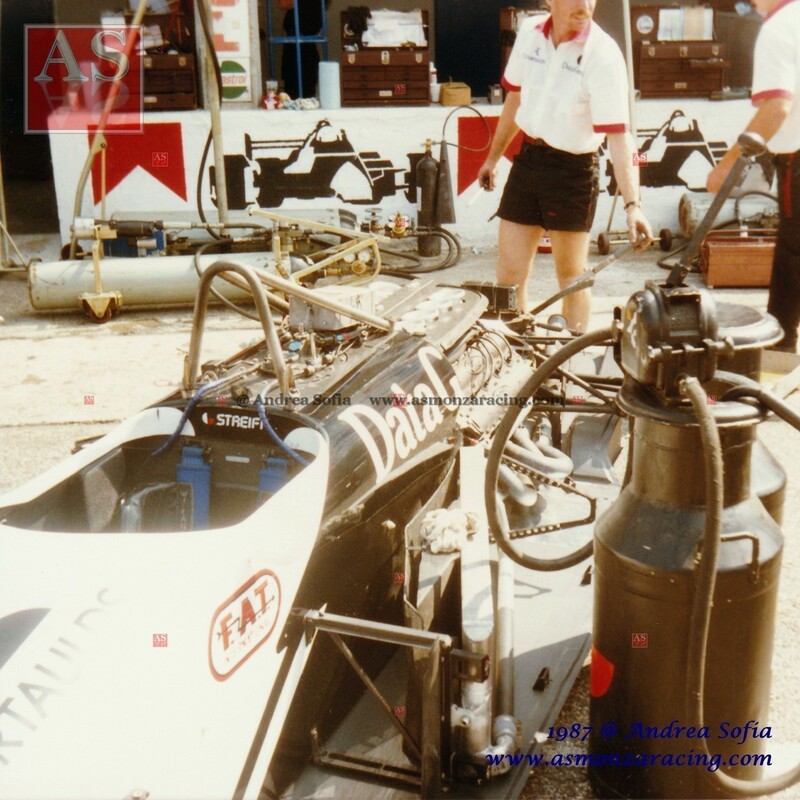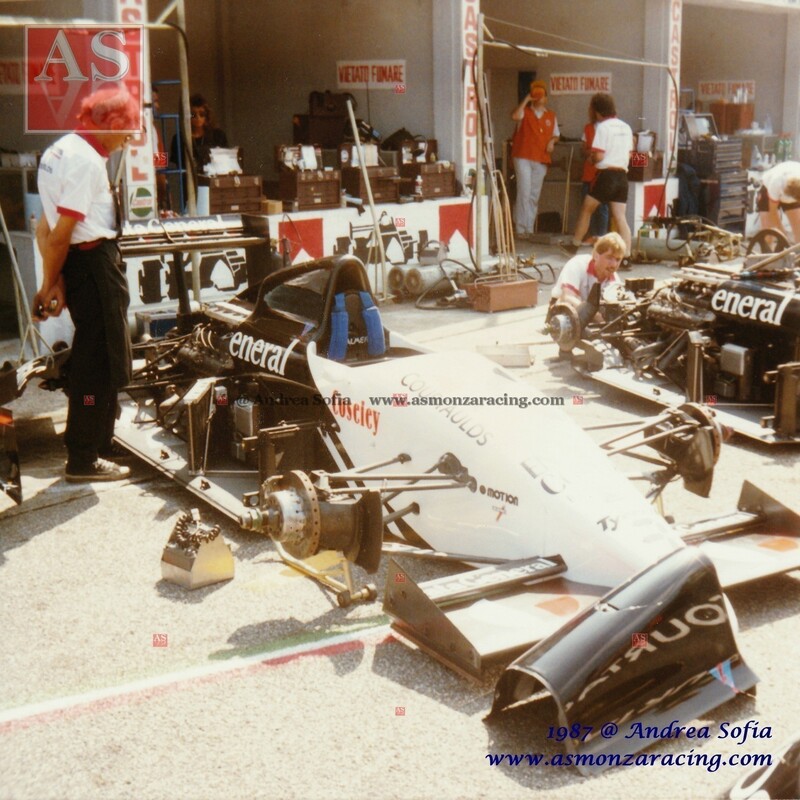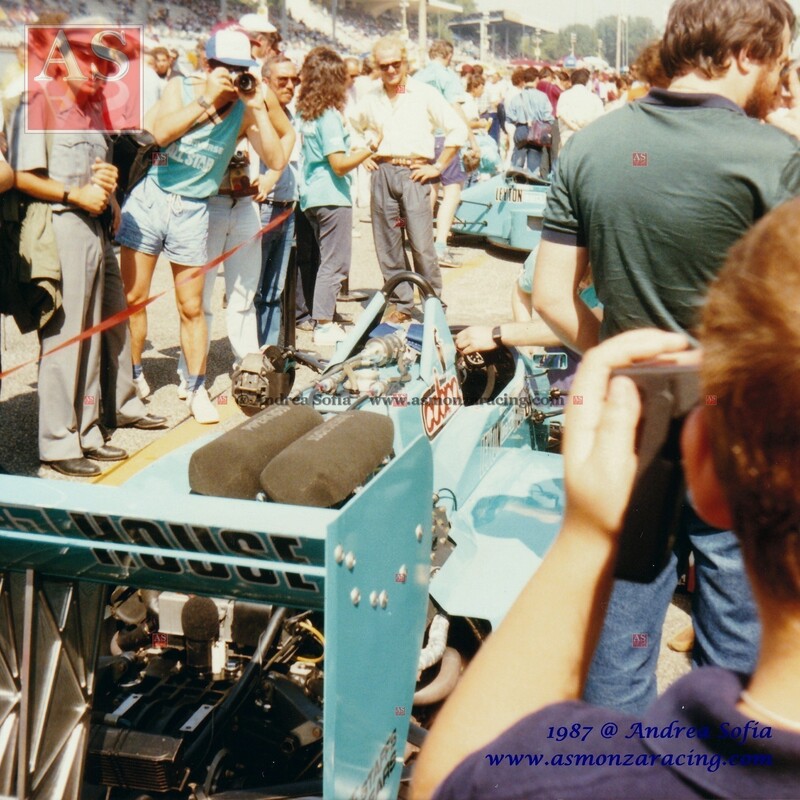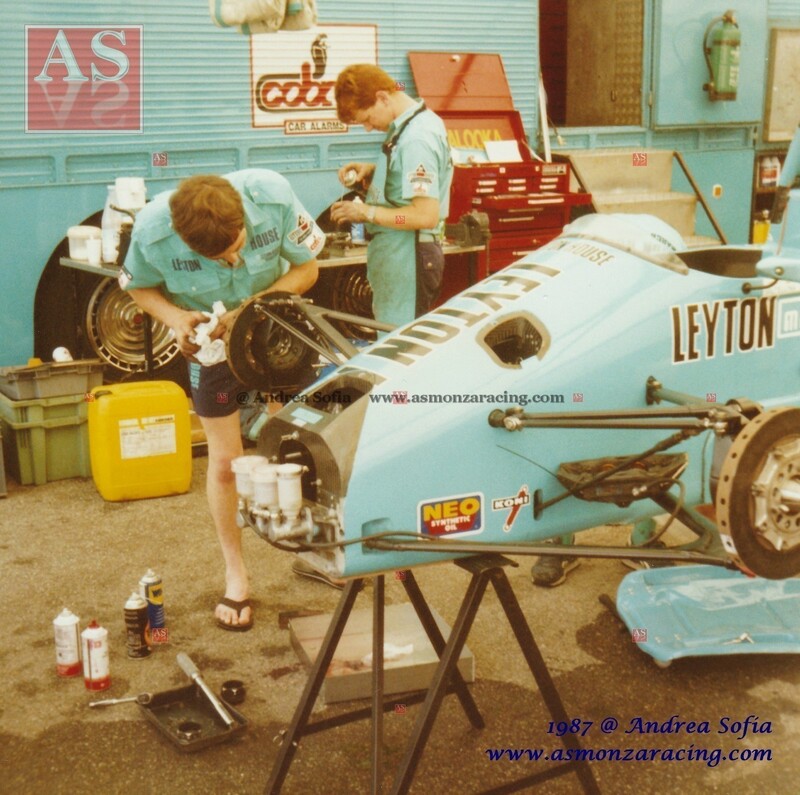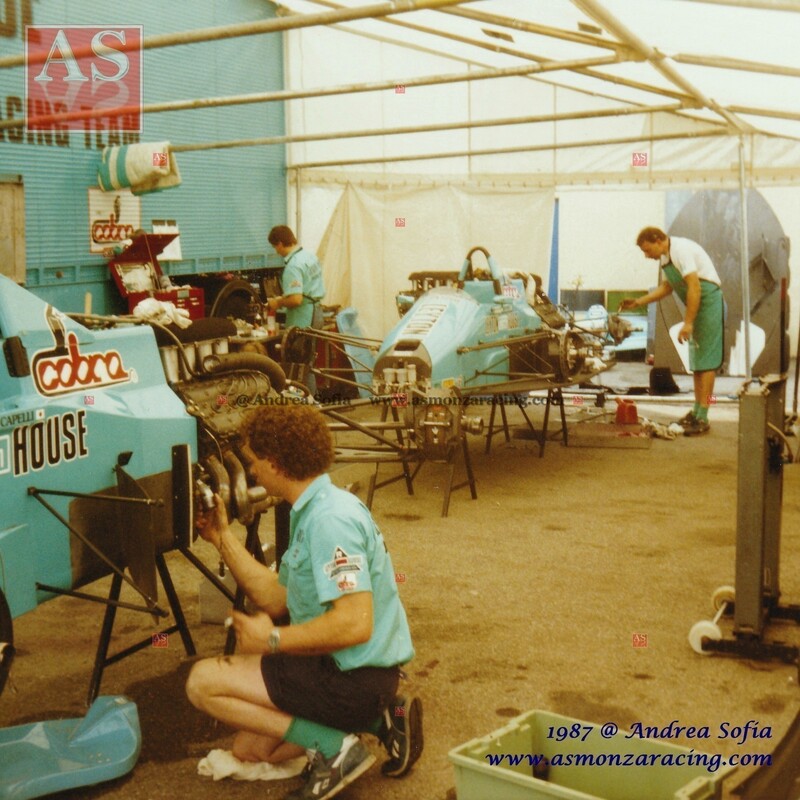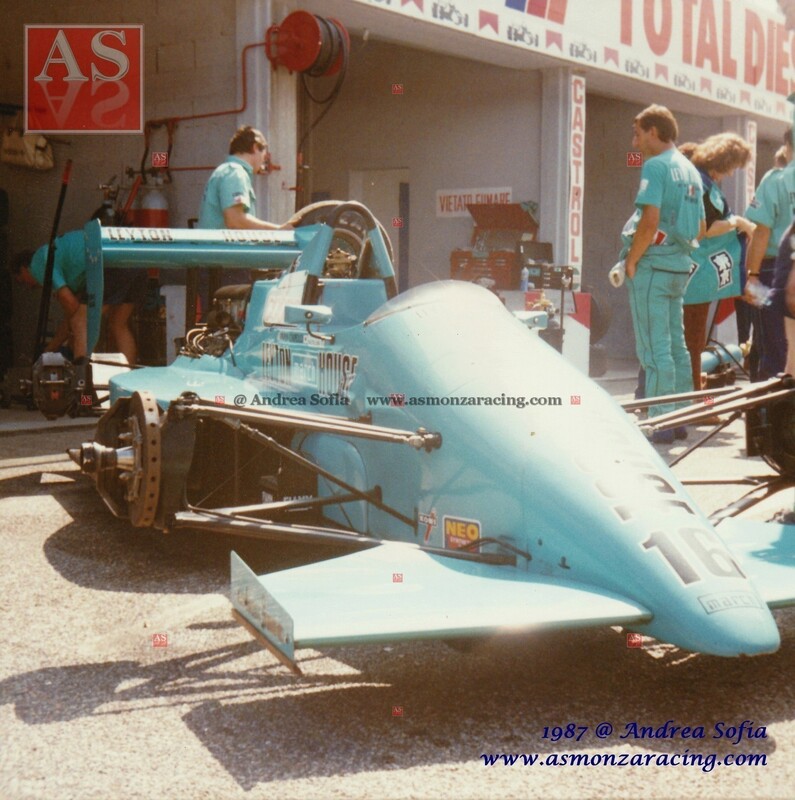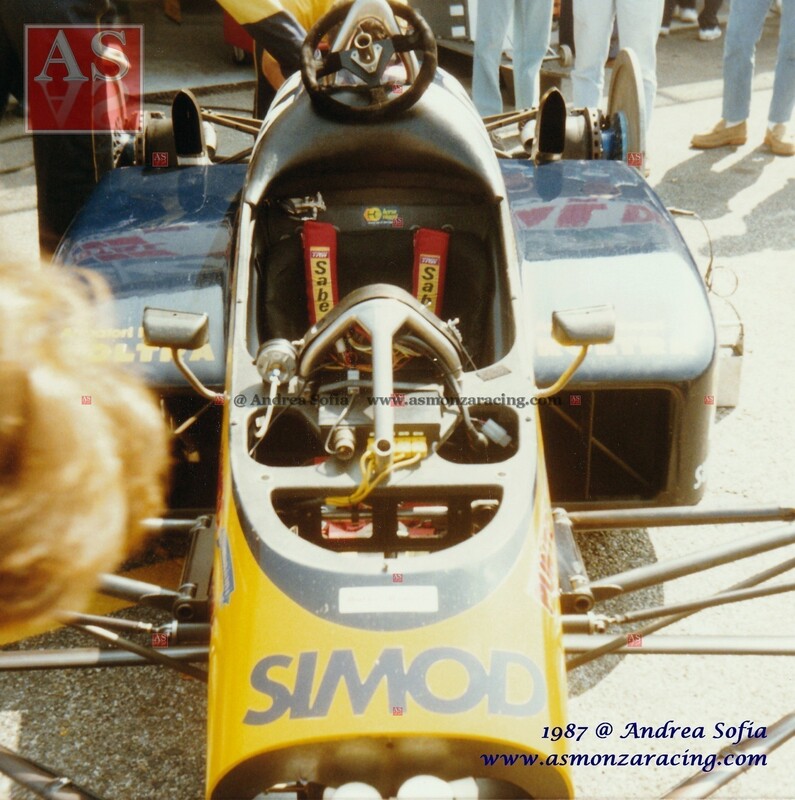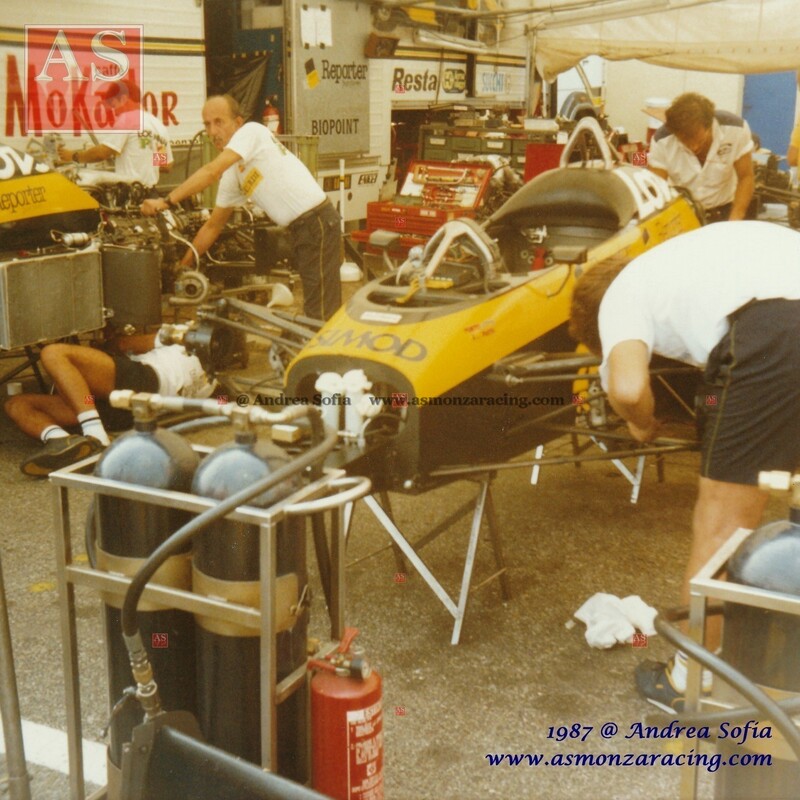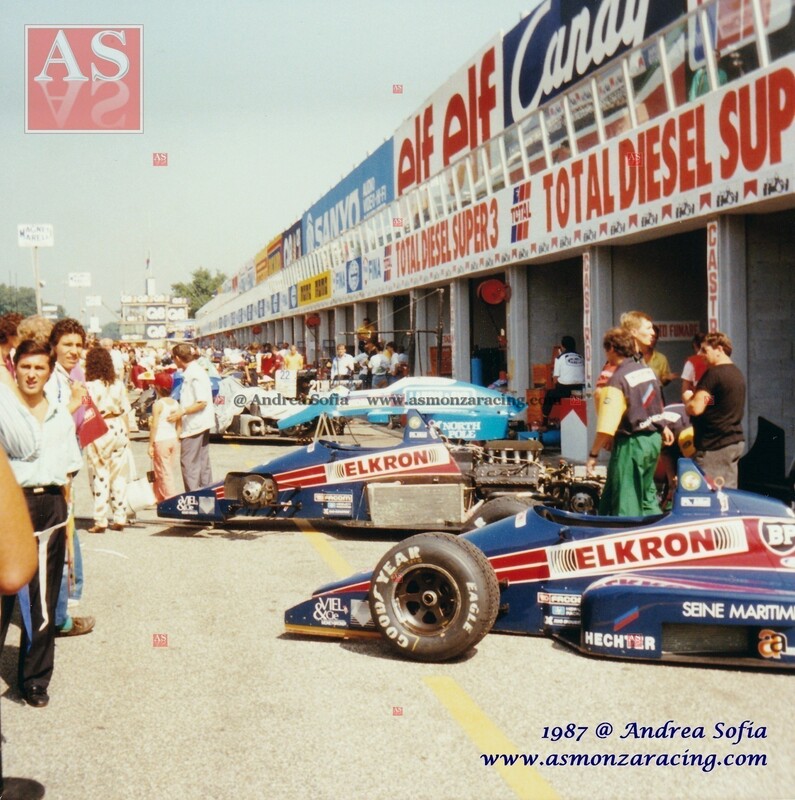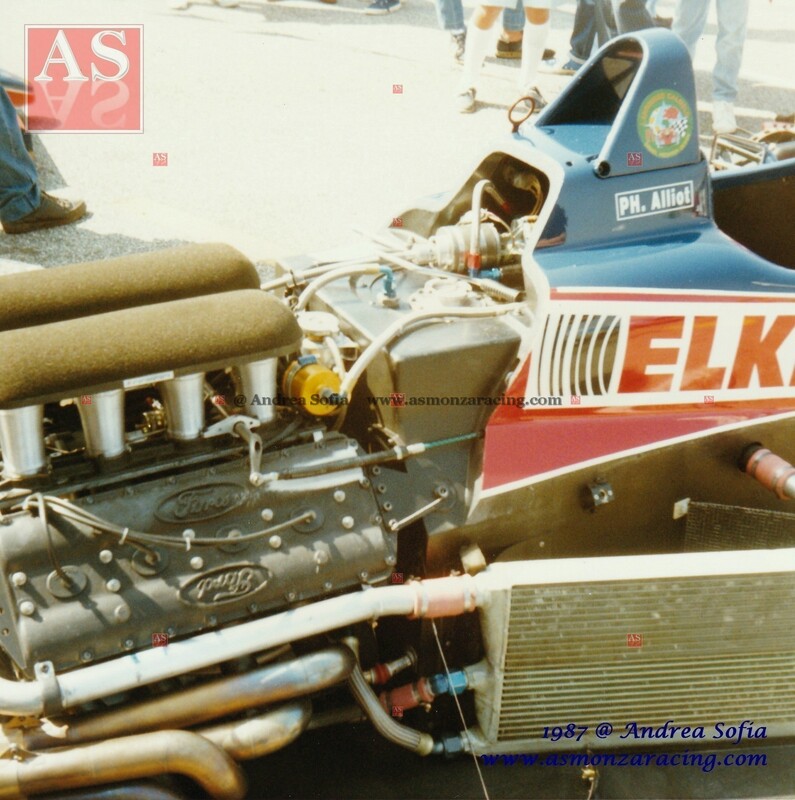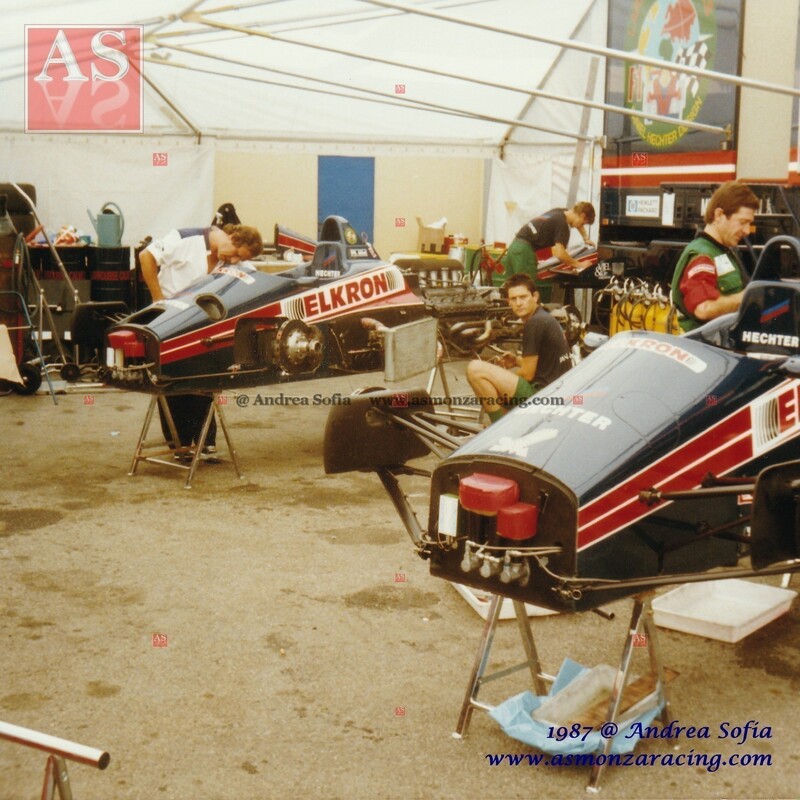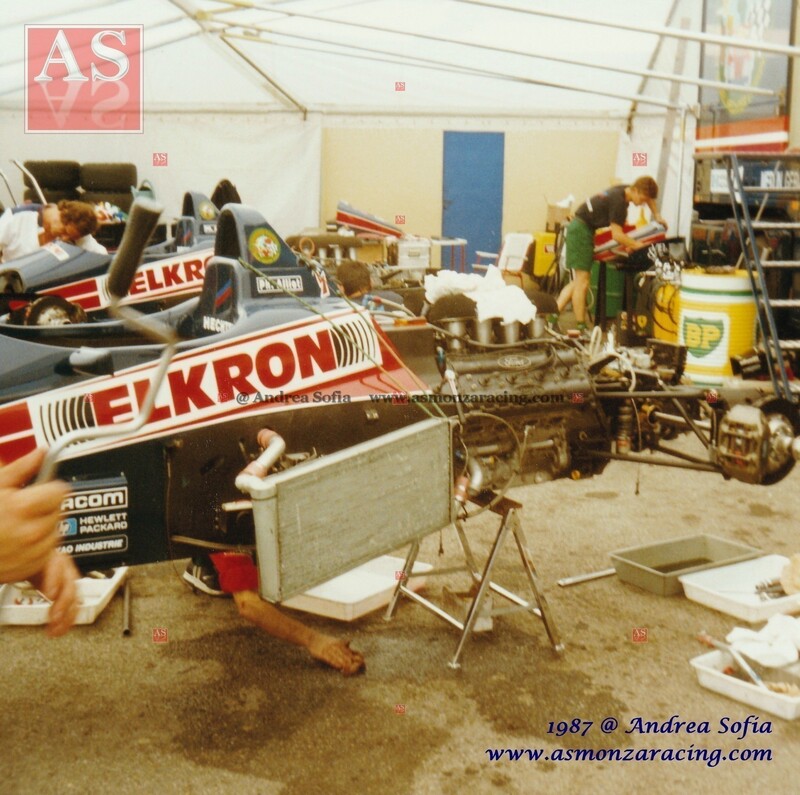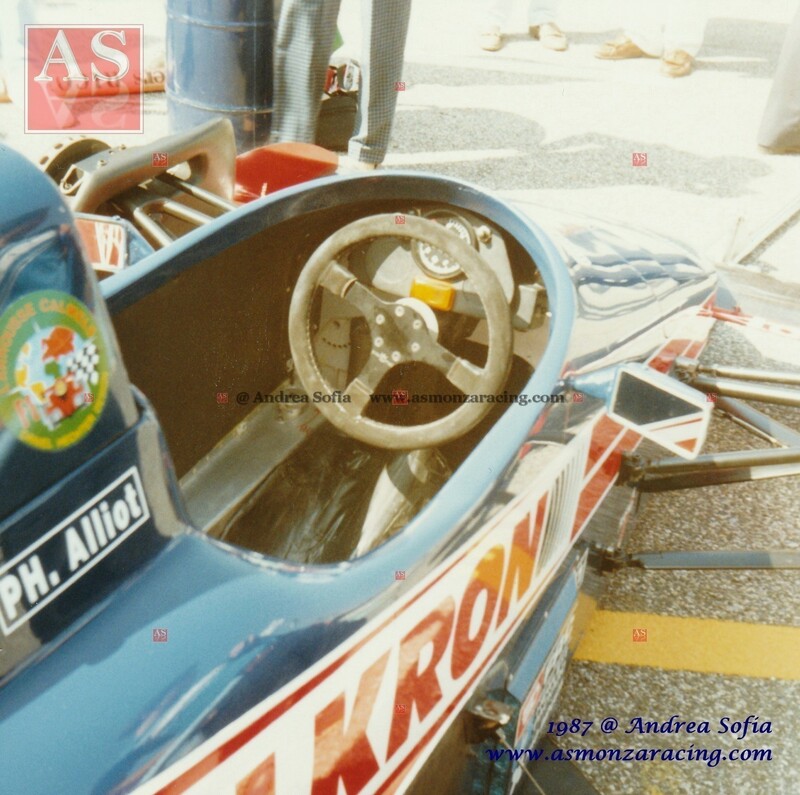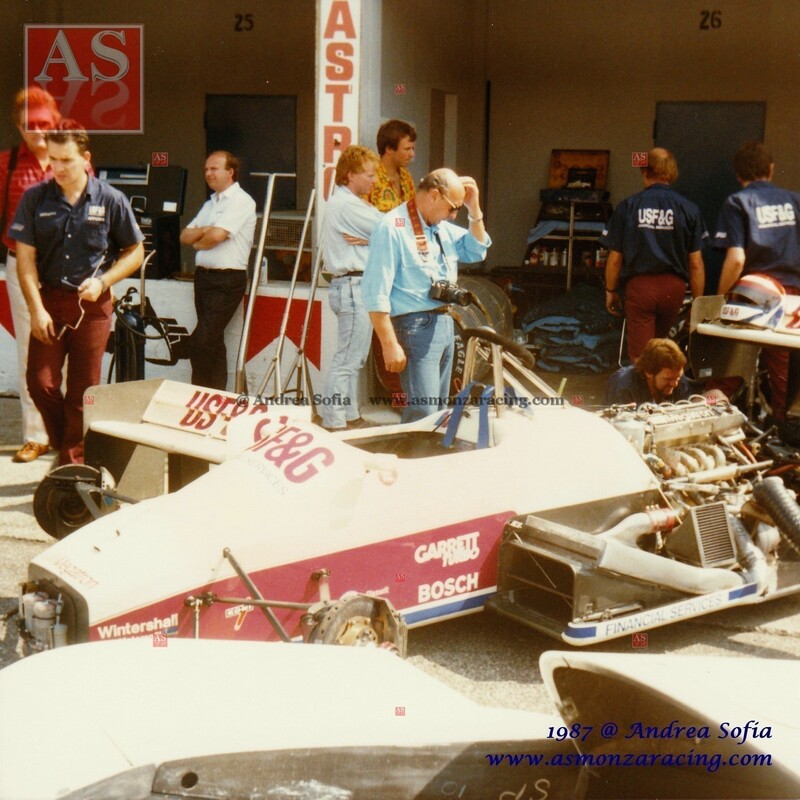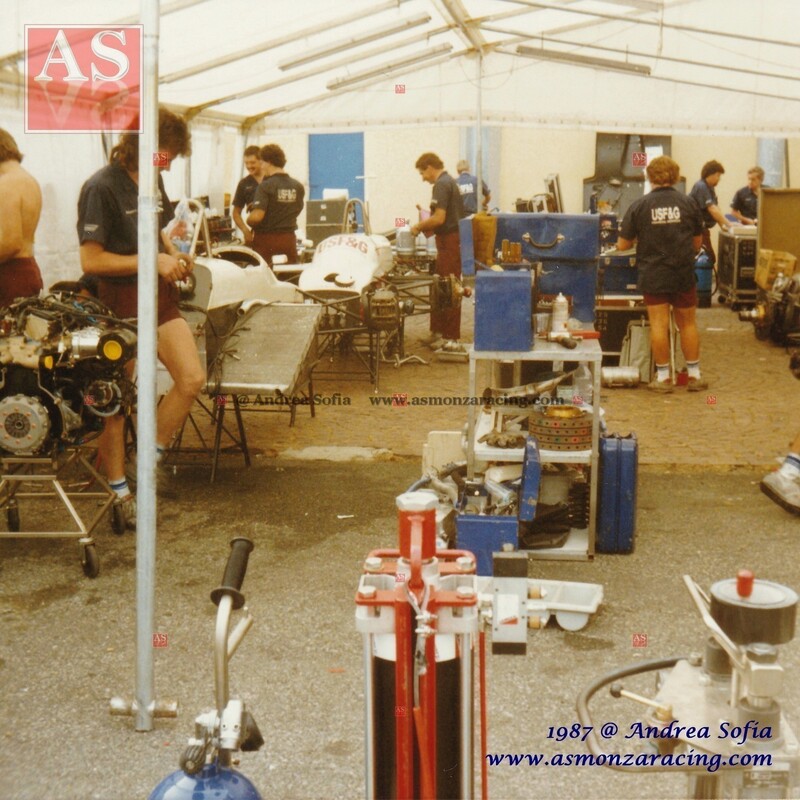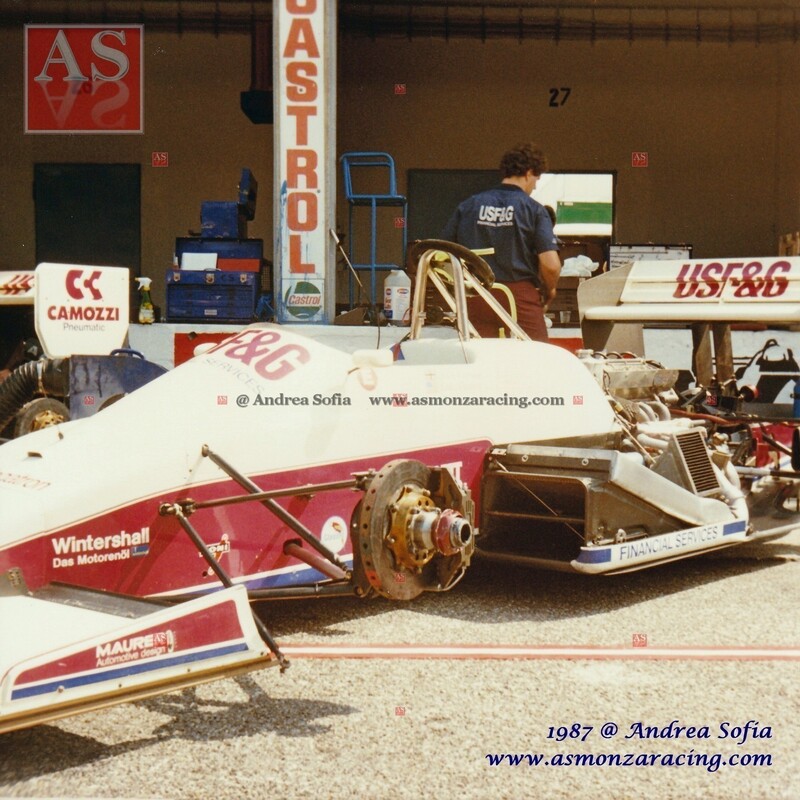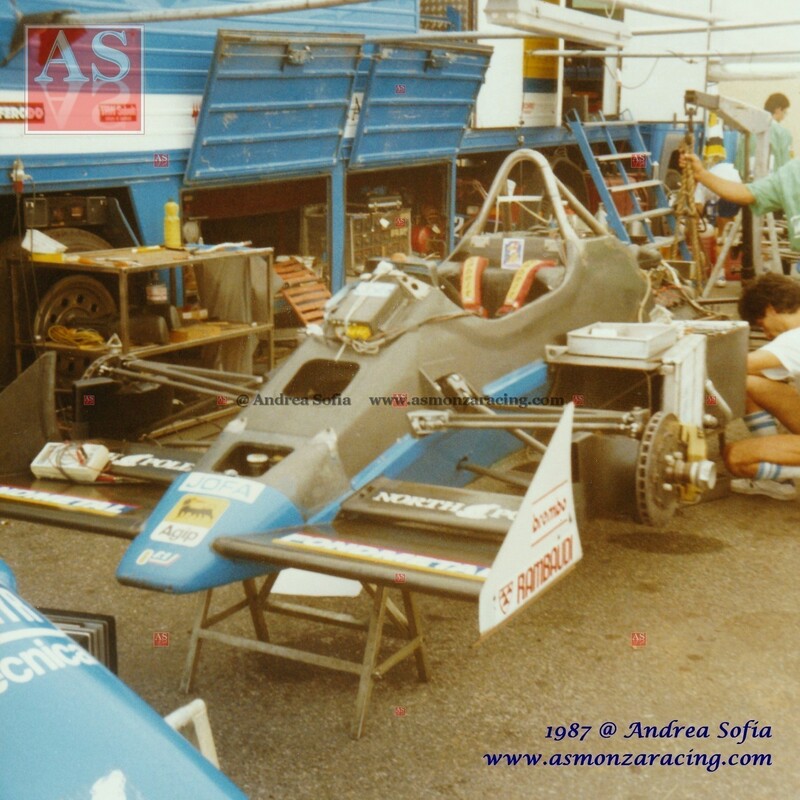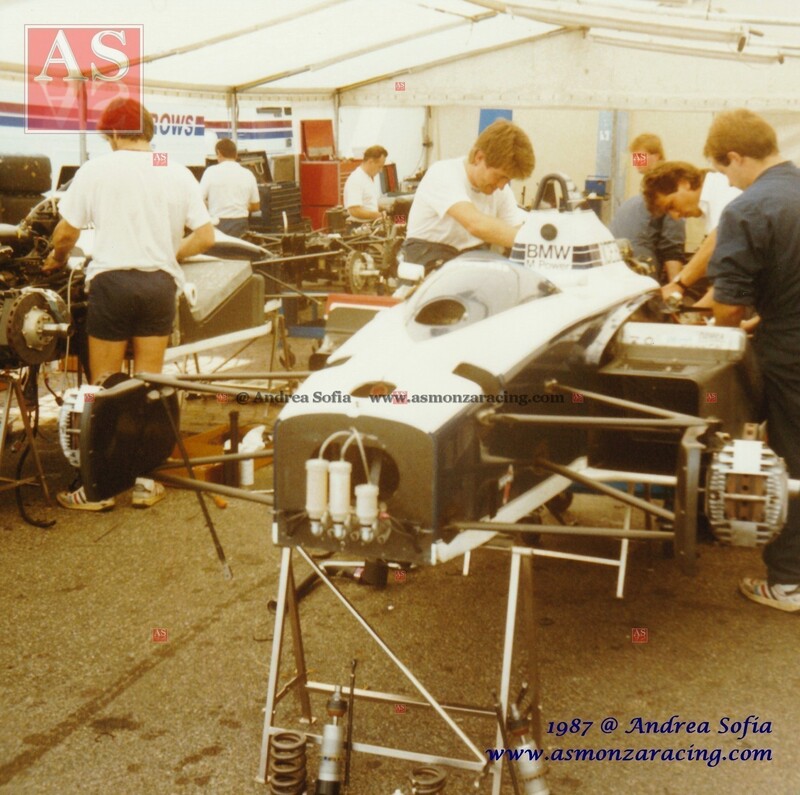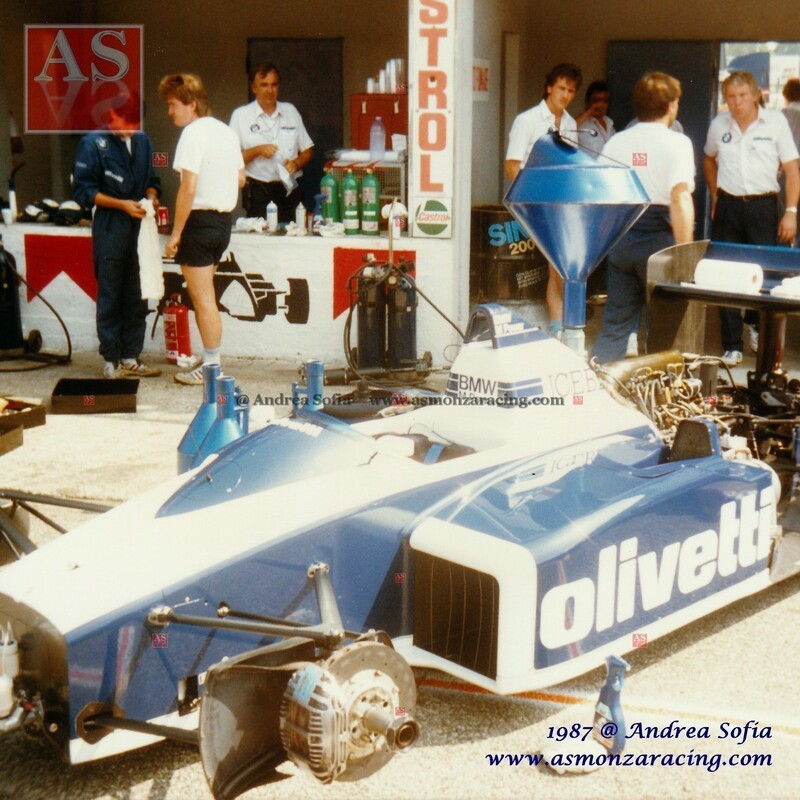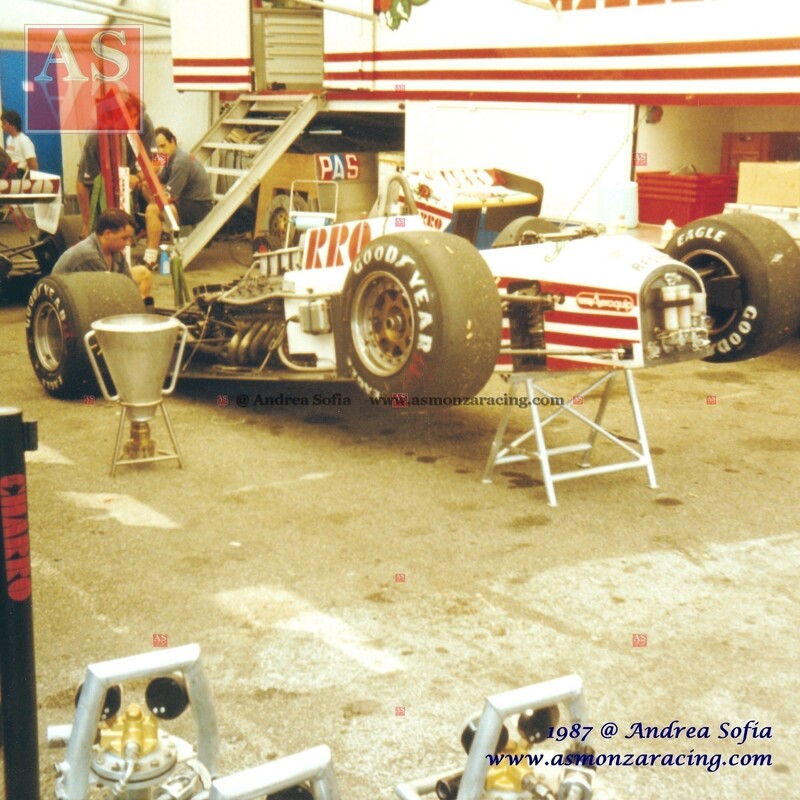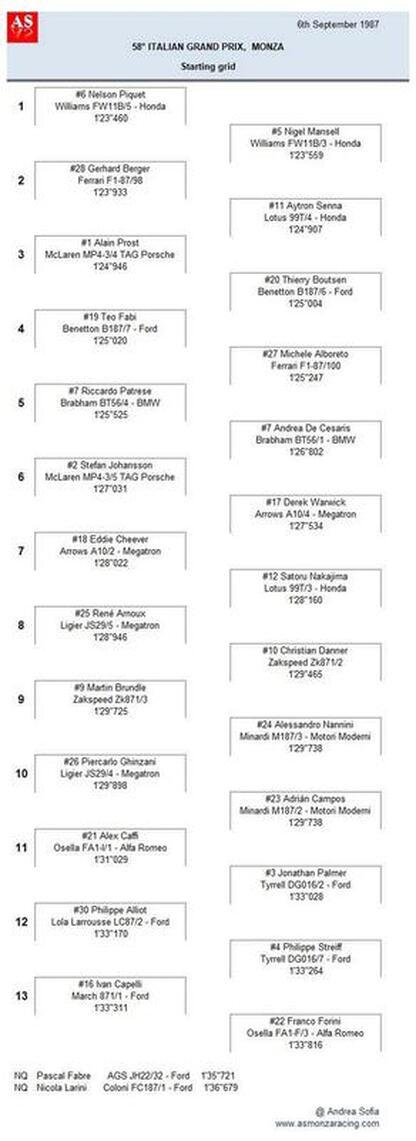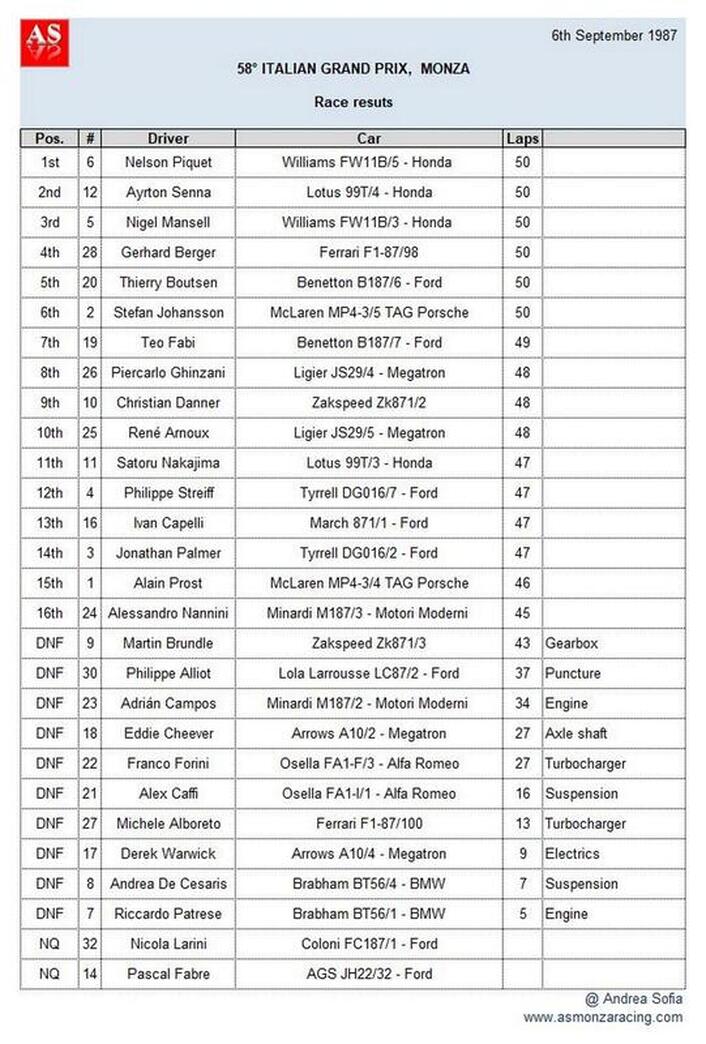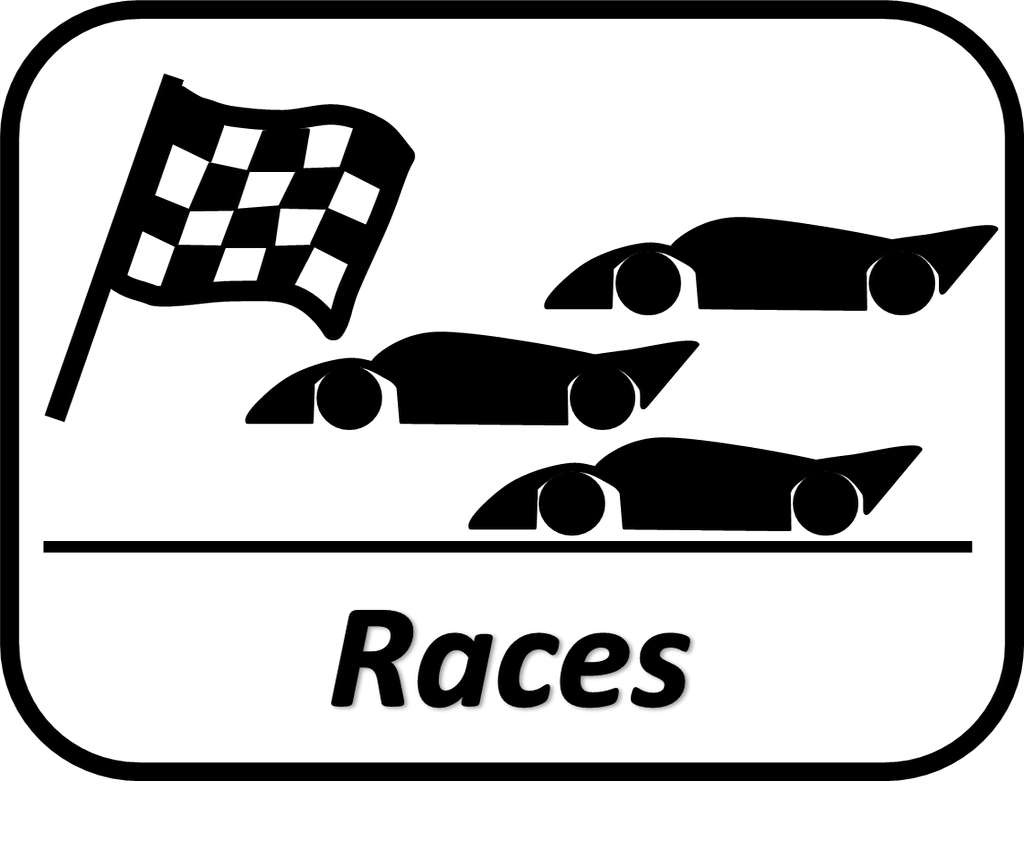Formula 1 Italian Grand Prix, Monza September 6, 1987
The 58th Italian Grand Prix, the eleventh round of the World Championship, was raced at Monza on September 6th 1987. At the start, the two Williams driven by Piquet and Mansell jerked from the front row taking the lead but halfway through the race, after the pit-stops for the tires changing, Ayrton Senna with the Lotus 99T, took the lead in front of the two Williams FW11B. The Ayrton Senna's strategy, unlike all the others drivers, did not include a stop for the tire change. As had already happened in the previous Monaco and Detroit Grand Prixes in which he had won using the same strategy, even in Monza it seemed that victory could not escape, despite the technical handicap due to a Lotus not at the same competitive level of the Williams, although if both cars were powered by Honda engine. On lap 43, while Senna was preparing to dub the Ghinzani's Ligier in the Parabolica corner, the Brazilian made one of his very rare mistakes and ended up in the sand. When he returned to the track, Piquet had already jumped at lead and the recovery attempt was useless. Senna finished second behind Piquet and ahead of Mansell.
Williams FW11 B Honda
The two Williams FW11B, chassis no. 5 and frame n. 3, were assigned to Nelson Piquet and Nigel Mansell respectively. Piquet was driving a car equipped with electronically controlled active suspension, while Mansell had conventional spring-dampers suspensions. With or without active suspension, the two Williams were very fast in practice, getting the front row, with Piquet in pole position and Mansell in second place. The most important news was that the Williams Team, having reached a resounding and stormy divorce with Honda, would have raced in 1988 with the naturally aspirated V8 engines, supplied by Judd to pass, in 1989, to the V10 Renault engine that the French company was developing. The other news was that Riccardo Patrese in 1988 would take Piquet's place in the English team alongside Nigel Mansell. Nelson Piquet won the Monza's Grand Prix and Mansell finished third. At the end of the 1987 season Nelson Piquet became World Champion and Williams Team won the constructors' title.
Lotus 99T Honda
Vanished the victory for Ayrton Senna seven laps to the end, at the wheel of the Lotus 99T Honda chassis number 4, due to a driving error during the dubbing of Piercarlo Ghinzani. The Brazilian started from the second row with the fourth fastest time with an efficient Lotus and the right strategy but he only came second. The second Lotus, chassis number 3 was entered to the Japanese driver Satoru Nakajima who in practice did not go beyond the fourteenth fasten time and ended the race in eleventh place.
Ferrari F1-87
The Ferrari race at Monza was rather disappointing. Michele Alboreto was driving the chassis # F1 87/100 with which he achieved the eighth time. In the race after a few laps, a flat bottom support tie-rod broke and soon the bodywork covering the left side flew away on the track. The Milanese continued until the thirteenth lap when a seal no longer retained by the bodywork slipped into the air intake of the turbine forcing it to retire. Gerhard Berger with the chassis # F1 87/98, started from the second row with the third time, and his beautiful race was ruined by an anomalous tire wear that allowed him to reach only fourth place.
Benetton B187 Ford
The Benetton B197s were equipped with the V6 Ford TEC Turbo engine and at Monza they proved quite fast. Thierry Boutsen with the chassis # B187/6 obtained the sixth time in qualifying, securing the third row and was the author of a very tight race that brought him to the fifth final place despite the flat bottom of his car had not been correctly fixed. The Milanese Teo Fabi had a new chassis at Monza, the number B187/8, but he went out of track during practice on Friday, the chassis was damaged and so he was forced to use the number B187/4 that the team had brought as a spare. Fabi qualified with the seventh fastest lap, making him the fastest Italian driver in practice and ended the race seventh, one lap behind the leader.
McLaren MP4-3 TAG Porsche
For a Porsche that is leaving, a Honda that arrives. McLaren made the transition to Honda engines for the 1988 season official at Monza. At Monza it was also made official the hiring of Ayrton Senna for the 1988 season. Alain Prost with the McLaren Mp4/3 chassis #4, in practice managed to snatch the fifth position with a car with very low downforce in an attempt to recover speed. The Frenchman race was characterized by serious problems with the electronic control unit which forced him to the pits already from the first laps. In the end he finished the race in fifteenth place. New chassis for Stefan Johansson, the McLaren Mp4/3-5, finished to assembling in the Monza pits. The Swedish driver was still sore from the accident that occurred at the Austrian Grand Prix where he had run over a deer (!) With a broken rib, Johansson was only eleventh in practice and in the race he reached the sixth place.
Ligier JS29 – Megatron
The big problem for the transalpine team was the availability of the 4 cylinder Megatron engines (practically the BMW M12/13 engines of the previous season). René Arnoux was driving the JS29-5 but soon during practice he was forced to use the T-car JS29-3 due to ignition problems on his car. Piercarlo Ghinzani used the JS29-4. During the practice on Saturday morning both drivers broke the engine and were forced to interrupt the tests because there were only two engines left to use in the race. Arnoux and Ghinzani qualified respectively in the fifteenth and nineteenth place on the starting grid. Piercarlo Ghinzani reached the finish line eighth and Arnoux tenth.
Zakspeed Zk871
The small German team, active in Formula 1 since 1985, showed up at Monza with two Zakspeed Zk871 cars equipped with the 1.5-liter Zakspeed 4-cylinder turbo engine capable of developing around 820 hp. The drivers were Martin Brundle and Christian Danner. The practices were characterized by major gearbox problems that penalized both drivers. Christian Danner with the Zk871/2 was sixteenth in practice and ninth at the finish line while Martin Brundle with the Zk871/3 qualified eighteenth and was betrayed again by the gearbox seven laps from the end.
Tyrrell DG016 – Ford
The Tyrrell Team was racing with the 3.5-liter Ford Cosworth DFZ naturally-aspirated engines and the "bombing news" at Monza was the formalization of the agreement between Tyrrell and Yamaha for the supply of the engines for the 1988 season. During practice Jonathan Palmer was the fastest among the non-turbo cars (Tyrrell, March, Lola-Larrousse, Coloni and AGS) placing his Tyrrell DG016/2 at the twenty-second place. At the end of the race it was only fourteenth. Philippe Streiff had a new chassis, DG016/7 to replace the one demolished at the Austrian Grand Prix and qualified it for twenty-fourth place. In the race despite a mishap with Philippe Alliot, he finished in twelfth place, first among the non-turbos cars.
March 871 – Ford
The only driver of the English team named Leyton House-March, was the Italian Ivan Capelli who had two cars, the 871/1 and the 871/3 as a T-car. At Monza the car was equipped with the 3.5-liter Ford Cosworth DFZ prepared by specialist Brian Hart able to maintain the lowest operating temperature. Capelli qualified with the penultimate time and reached the finish line thirteenth at three laps from the winner. The team's technical director was Adrian Newey, at his first experiences in Formula 1.
Minardi M187 - Motori Moderni
The Scuderia Minardi took three cars to Monza equipped with the V6 turbo Motori Moderni, the M187/3 for Alessandro Nannini, the M187/2 for Adrian Campos and the M187/1 as a T-car. The practices of the Italian Grand Prix for the small Faenza team and for the drivers were complicated and tiring. Between broken suspensions, down-powered engines and a big crash of Adrian Campos at Lesmo the practices ended with the eighteenth time for the Italian driver and the twentieth for the Spanish driver. In the race Nannini finished in sixteenth place five laps from the winner while Campos was stopped at lap 34 due to an engine failure.
Lola Larrousse LC87- Ford
Earlier this year, former driver Gérard Larrousse and French businessman Didier Calmels founded the Larrousse & Calmels Team. The French team, in order to compete in the Formula 1 World Championship, commissioned to the Lola a car, the Lola LC87, which was designed by Eric Broadley and Ralph Bellamy. The only driver throughout the season was Philippe Alliot, joined by Yannick Dalmas only in the last three Grand Prixes of the season, in Mexico, Japan and Australia. In Monza Alliot had the Lc87/2 (and the Lc87/3 as a T-car) and qualified for the twenty-third place despite a big fright caused by the breaking of a rear suspension at the first chicane. In the race due to a punctured tire after a misunderstanding with Philippe Streiff, he was forced to retire at the thirty-seventh lap.
Arrows A10 – Megatron
Eddie Cheever and Derek Warwick were the drivers of the Team Arrows. The car was equipped with the 4-cylinder Megatron engine and at Monza they were not at all competitive. The practices ended in twelfth and thirteenth place respectively with Derek Warwick at the wheel of the A10 chassis #4 and Eddie Cheever with the A10 chassis #2. In the race both drivers were forced to retire, Warwick due to electrical problems on lap nine and Cheever on lap twenty-seventh lap due to a broken axle shaft.
Osella FA1-I - Alfa Romeo
|
The Italian team presented the news of the second driver at Monza. Alongside Alex Caffi with the FA1-G was the Swiss Franco Forini who qualified the car for the last available place. Caffi qualified for the twenty-first time. The two Osella in practices did not present any particular problems but they were not very competitive. The race ended for Caffi in the sixteenth lap due to a broken suspension and to Forini at lap twenty-seventh due to the turbo breaking.
|
Brabham BT56 – BMW
The two Brabham BT56s were equipped with the BMW 4-cylinder turbo engine and were entered to Riccardo Patrese and Andrea De Cesaris. In practice the two drivers occupied the fifth row with the ninth and tenth time respectively but for both the race was very short. Patrese broke the engine on the fifth lap and De Cesaris was stopped by a broken suspension in the seventh.
Coloni FC187 - Ford
|
First among the unqualified cars, the debutant Coloni FC187 of the equally debutant driver Nicola Larini. The Coloni FC187, designed by Roberto Ori, equipped with the classic 3.5-liter Ford Cosworth DFZ, was already compliant with the 1988 regulation which included the pedals placed inside the front wheel axle. The very little experience, some trouble with electronics and a broken clutch, played against the small but tenacious team led by Enzo Coloni.
|
AGS JH22 - Ford
|
Very last and unqualified Pascal Fabre with the AGS Jh22, equipped with the 3.5-liter Ford Cosworth DFZ. From the beginning of the year the team was evermore to the last position of the grid but at Monza the first missed qualification arrived.
|

